AMD Radeon R9 270X vs Nvidia GeForce GTX 750 Ti: What is the difference?
41points
AMD Radeon R9 270X
41points
Nvidia GeForce GTX 750 Ti
MSI HawkMSI Gaming OCPowerColor OCVTX3D X-EditionPowerColor Devil
EVGAEVGA Superclocked
vs
54 facts in comparison
AMD Radeon R9 270X
Nvidia GeForce GTX 750 Ti
Why is AMD Radeon R9 270X better than Nvidia GeForce GTX 750 Ti?
- 1.25 TFLOPS higher floating-point performance?
2.56 TFLOPSvs1.31 TFLOPS - 15.7 GPixel/s higher pixel rate?
32 GPixel/svs16.3 GPixel/s - 39.2 GTexels/s higher texture rate?
80 GTexels/svs40.8 GTexels/s - 92.6GB/s more memory bandwidth?
179GB/svs86.4GB/s - 128bit wider memory bus width?
256bitvs128bit - 640 more shading units?
1280vs640 - 930million more transistors?
2800 millionvs1870 million - 40 more texture mapping units (TMUs)?
80vs40
Why is Nvidia GeForce GTX 750 Ti better than AMD Radeon R9 270X?
- 120W lower TDP?
60Wvs180W - 14°C lower load GPU temperature?
62°Cvs76°C - 5°C lower idle GPU temperature?
25°Cvs30°C - 13.
3dB lower load noise level?
38.3dBvs51.6dB - 2.2dB lower idle noise level?
37.8dBvs40dB - 5W lower power consumption when idle?
73Wvs78W - 129mm narrower?
145mmvs274mm - 9mm shorter?
111mmvs120mm
Which are the most popular comparisons?
AMD Radeon R9 270X
vs
Nvidia GeForce GTX 1050
Nvidia GeForce GTX 750 Ti
vs
AMD Radeon RX 550
AMD Radeon R9 270X
vs
AMD Radeon RX 550
Nvidia GeForce GTX 750 Ti
vs
Nvidia GeForce GTX 1050
AMD Radeon R9 270X
vs
Gigabyte GeForce GTX 1050 Ti
Nvidia GeForce GTX 750 Ti
vs
Nvidia GeForce GT 1030 DDR4
AMD Radeon R9 270X
vs
AMD Radeon RX 580
Nvidia GeForce GTX 750 Ti
vs
Nvidia GeForce GTX 1650
AMD Radeon R9 270X
vs
AMD Radeon R7 370
Nvidia GeForce GTX 750 Ti
vs
XFX HD 6950 XXX 1GB
AMD Radeon R9 270X
vs
AMD Radeon RX Vega 8
Nvidia GeForce GTX 750 Ti
vs
Nvidia GeForce 940MX
AMD Radeon R9 270X
vs
AMD Radeon RX 570
Nvidia GeForce GTX 750 Ti
vs
Nvidia GeForce GTX 750
AMD Radeon R9 270X
vs
AMD Radeon RX 560
Nvidia GeForce GTX 750 Ti
vs
Nvidia GeForce MX150
AMD Radeon R9 270X
vs
Nvidia GeForce GTX 960
Nvidia GeForce GTX 750 Ti
vs
AMD Radeon Vega 8
Nvidia GeForce GTX 750 Ti
vs
Nvidia GeForce GTX 960
Price comparison
User reviews
Overall Rating
AMD Radeon R9 270X
1 User reviews
AMD Radeon R9 270X
7.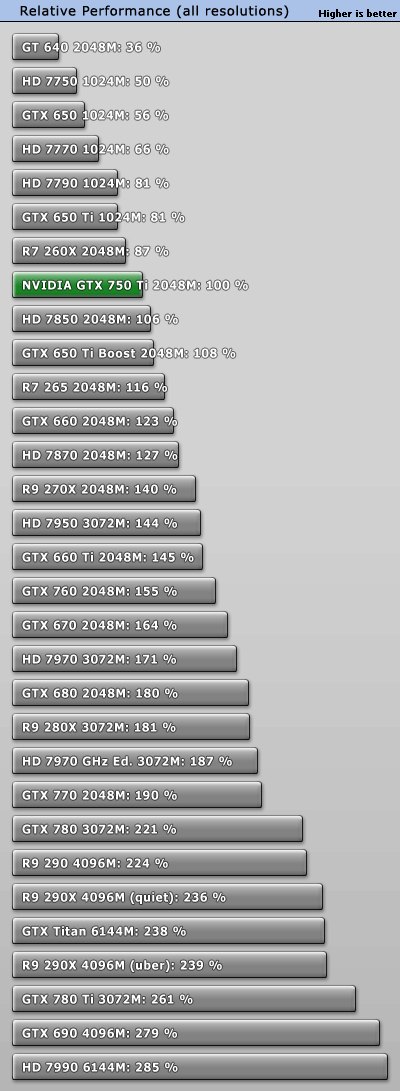 0/10
0/10
1 User reviews
Nvidia GeForce GTX 750 Ti
2 User reviews
Nvidia GeForce GTX 750 Ti
10.0/10
2 User reviews
Features
Value for money
10.0/10
1 votes
10.0/10
2 votes
Gaming
7.0/10
1 votes
8.5/10
2 votes
Performance
6.0/10
1 votes
7.5/10
2 votes
Fan noise
3.0/10
1 votes
5.5/10
2 votes
Reliability
10.0/10
1 votes
10.0/10
2 votes
Performance
1.GPU clock speed
1050MHz
1020MHz
The graphics processing unit (GPU) has a higher clock speed.
2.GPU turbo
1050MHz
1085MHz
When the GPU is running below its limitations, it can boost to a higher clock speed in order to give increased performance.
3.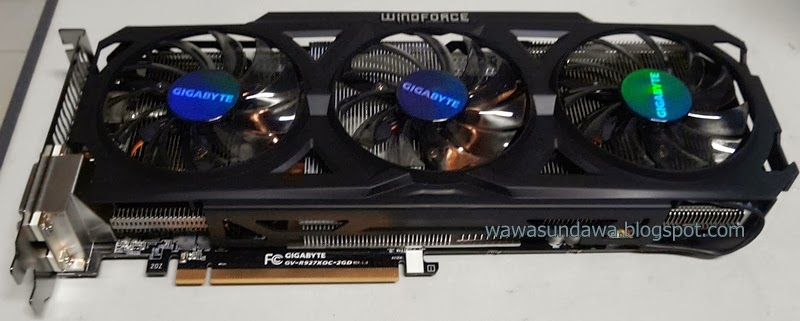 pixel rate
pixel rate
32 GPixel/s
16.3 GPixel/s
The number of pixels that can be rendered to the screen every second.
4.floating-point performance
2.56 TFLOPS
1.31 TFLOPS
Floating-point performance is a measurement of the raw processing power of the GPU.
5.texture rate
80 GTexels/s
40.8 GTexels/s
The number of textured pixels that can be rendered to the screen every second.
6.GPU memory speed
1400MHz
1350MHz
The memory clock speed is one aspect that determines the memory bandwidth.
7.shading units
Shading units (or stream processors) are small processors within the graphics card that are responsible for processing different aspects of the image.
8.texture mapping units (TMUs)
TMUs take textures and map them to the geometry of a 3D scene.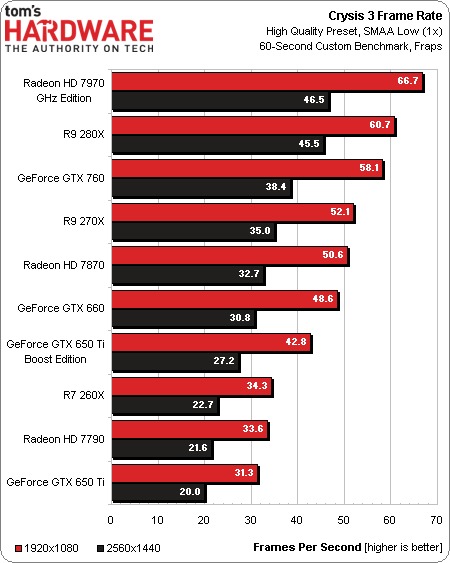 More TMUs will typically mean that texture information is processed faster.
More TMUs will typically mean that texture information is processed faster.
9.render output units (ROPs)
The ROPs are responsible for some of the final steps of the rendering process, writing the final pixel data to memory and carrying out other tasks such as anti-aliasing to improve the look of graphics.
Memory
1.effective memory speed
5600MHz
5400MHz
The effective memory clock speed is calculated from the size and data rate of the memory. Higher clock speeds can give increased performance in games and other apps.
2.maximum memory bandwidth
179GB/s
86.4GB/s
This is the maximum rate that data can be read from or stored into memory.
3.VRAM
VRAM (video RAM) is the dedicated memory of a graphics card. More VRAM generally allows you to run games at higher settings, especially for things like texture resolution.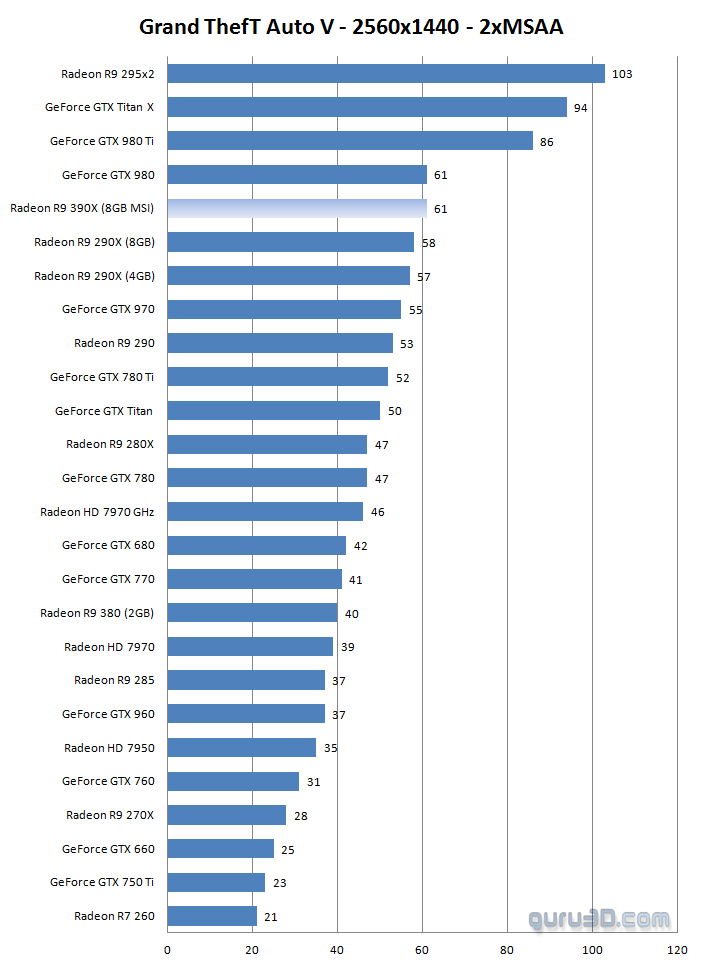
4.memory bus width
256bit
128bit
A wider bus width means that it can carry more data per cycle. It is an important factor of memory performance, and therefore the general performance of the graphics card.
5.version of GDDR memory
Newer versions of GDDR memory offer improvements such as higher transfer rates that give increased performance.
6.Supports ECC memory
✖AMD Radeon R9 270X
✖Nvidia GeForce GTX 750 Ti
Error-correcting code memory can detect and correct data corruption. It is used when is it essential to avoid corruption, such as scientific computing or when running a server.
Features
1.DirectX version
DirectX is used in games, with newer versions supporting better graphics.
2.OpenGL version
OpenGL is used in games, with newer versions supporting better graphics.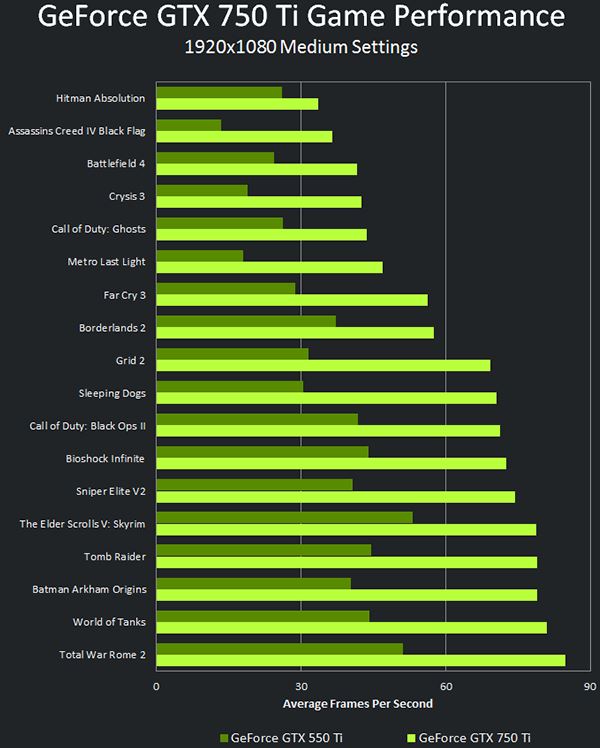
3.OpenCL version
Some apps use OpenCL to apply the power of the graphics processing unit (GPU) for non-graphical computing. Newer versions introduce more functionality and better performance.
4.Supports multi-display technology
✔AMD Radeon R9 270X
✔Nvidia GeForce GTX 750 Ti
The graphics card supports multi-display technology. This allows you to configure multiple monitors in order to create a more immersive gaming experience, such as having a wider field of view.
5.load GPU temperature
A lower load temperature means that the card produces less heat and its cooling system performs better.
6.supports ray tracing
✖AMD Radeon R9 270X
✖Nvidia GeForce GTX 750 Ti
Ray tracing is an advanced light rendering technique that provides more realistic lighting, shadows, and reflections in games.
7. Supports 3D
Supports 3D
✔AMD Radeon R9 270X
✔Nvidia GeForce GTX 750 Ti
Allows you to view in 3D (if you have a 3D display and glasses).
8.supports DLSS
✖AMD Radeon R9 270X
✖Nvidia GeForce GTX 750 Ti
DLSS (Deep Learning Super Sampling) is an upscaling technology powered by AI. It allows the graphics card to render games at a lower resolution and upscale them to a higher resolution with near-native visual quality and increased performance. DLSS is only available on select games.
9.PassMark (G3D) result
This benchmark measures the graphics performance of a video card. Source: PassMark.
Ports
1.has an HDMI output
✔AMD Radeon R9 270X
✔Nvidia GeForce GTX 750 Ti
Devices with a HDMI or mini HDMI port can transfer high definition video and audio to a display.
2.HDMI ports
More HDMI ports mean that you can simultaneously connect numerous devices, such as video game consoles and set-top boxes.
3.HDMI version
Unknown. Help us by suggesting a value. (AMD Radeon R9 270X)
Unknown. Help us by suggesting a value. (Nvidia GeForce GTX 750 Ti)
Newer versions of HDMI support higher bandwidth, which allows for higher resolutions and frame rates.
4.DisplayPort outputs
Allows you to connect to a display using DisplayPort.
5.DVI outputs
Allows you to connect to a display using DVI.
6.mini DisplayPort outputs
Allows you to connect to a display using mini-DisplayPort.
Price comparison
Cancel
Which are the best graphics cards?
GeForce GTX 750 Ti vs Radeon R9 270X Graphics cards Comparison
When choosing between GeForce GTX 750 Ti and Radeon R9 270X, it is worth examining the specifications of the models in detail. Do they meet the recommended requirements of modern games and software? Storage capacity, form factor, TDP, available ports, warranty and manufacturer support are all important. For example, the size of a PC case can limit the maximum thickness and length of the card. Often, instead of the factory overclocked card and RGB backlight, it is better to choose a reference model with a more efficient GPU. And make sure that your current power supply unit has the correct connection pins (using adapters is not recommended). This GPUs compare tool is meant to help you to choose the best graphics card for your build. Let’s find out the difference between GeForce GTX 750 Ti and Radeon R9 270X.
For example, the size of a PC case can limit the maximum thickness and length of the card. Often, instead of the factory overclocked card and RGB backlight, it is better to choose a reference model with a more efficient GPU. And make sure that your current power supply unit has the correct connection pins (using adapters is not recommended). This GPUs compare tool is meant to help you to choose the best graphics card for your build. Let’s find out the difference between GeForce GTX 750 Ti and Radeon R9 270X.
GeForce GTX 750 Ti
Check Price
Radeon R9 270X
Check Price
Main Specs
| GeForce GTX 750 Ti | Radeon R9 270X | |
| Power consumption (TDP) | 60 Watt | 180 Watt |
| Interface | PCIe 3.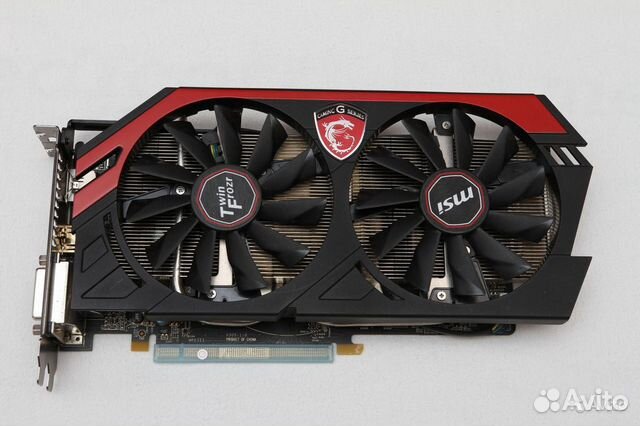 0 x16 0 x16 |
PCIe 3.0 x16 |
| Supplementary power connectors | None | 2 x 6-pin |
| Memory type | GDDR5 | GDDR5 |
| Maximum RAM amount | 2 GB | 2 GB |
| Display Connectors | 2x DVI, 1x mini-HDMI | 2x DVI, 1x HDMI, 1x DisplayPort |
|
Check Price |
Check Price |
- Radeon R9 270X has 200% more power consumption, than GeForce GTX 750 Ti.
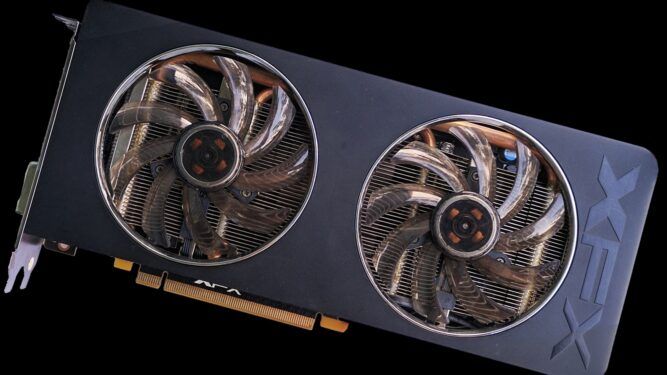
- Both video cards are using PCIe 3.0 x16 interface connection to a motherboard.
- GeForce GTX 750 Ti and Radeon R9 270X have maximum RAM of 2 GB.
- Both cards are used in Desktops.
- GeForce GTX 750 Ti is build with Maxwell architecture, and Radeon R9 270X — with GCN.
- GeForce GTX 750 Ti and Radeon R9 270X are manufactured by 28 nm process technology.
Game benchmarks
| Assassin’s Creed OdysseyBattlefield 5Call of Duty: WarzoneCounter-Strike: Global OffensiveCyberpunk 2077Dota 2Far Cry 5FortniteForza Horizon 4Grand Theft Auto VMetro ExodusMinecraftPLAYERUNKNOWN’S BATTLEGROUNDSRed Dead Redemption 2The Witcher 3: Wild HuntWorld of Tanks | ||
| high / 1080p | 20−22 | 24−27 |
| ultra / 1080p | 12−14 | 14−16 |
| QHD / 1440p | 6−7 | 10−11 |
| 4K / 2160p | 5−6 | 6−7 |
| low / 720p | 40−45 | 45−50 |
| medium / 1080p | 24−27 | 30−35 |
The average gaming FPS of Radeon R9 270X in Assassin’s Creed Odyssey is 15% more, than GeForce GTX 750 Ti. |
||
| high / 1080p | 30−35 | 40−45 |
| ultra / 1080p | 27−30 | 30−35 |
| QHD / 1440p | 10−12 | 18−20 |
| 4K / 2160p | 8−9 | 10−12 |
| low / 720p | 65−70 | 80−85 |
| medium / 1080p | 35−40 | 45−50 |
| The average gaming FPS of Radeon R9 270X in Battlefield 5 is 30% more, than GeForce GTX 750 Ti. | ||
| low / 768p | 50−55 | 50−55 |
| QHD / 1440p | 0−1 | 0−1 |
GeForce GTX 750 Ti and Radeon R9 270X have the same average FPS in Call of Duty: Warzone. |
||
| low / 768p | 230−240 | 240−250 |
| medium / 768p | 200−210 | 210−220 |
| ultra / 1080p | 120−130 | 140−150 |
| QHD / 1440p | 90−95 | 110−120 |
| 4K / 2160p | 50−55 | 60−65 |
| high / 768p | 160−170 | 180−190 |
| The average gaming FPS of Radeon R9 270X in Counter-Strike: Global Offensive is 11% more, than GeForce GTX 750 Ti. | ||
| low / 768p | 60−65 | 60−65 |
| ultra / 1080p | 50−55 | − |
| medium / 1080p | 55−60 | 55−60 |
GeForce GTX 750 Ti and Radeon R9 270X have the same average FPS in Cyberpunk 2077.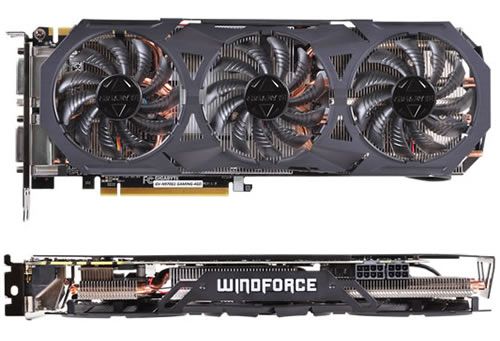 |
||
| low / 768p | 120−130 | 120−130 |
| medium / 768p | 100−110 | 110−120 |
| ultra / 1080p | 80−85 | 90−95 |
| The average gaming FPS of Radeon R9 270X in Dota 2 is 5% more, than GeForce GTX 750 Ti. | ||
| high / 1080p | 24−27 | 30−35 |
| ultra / 1080p | 21−24 | 27−30 |
| QHD / 1440p | 18−20 | 21−24 |
| 4K / 2160p | 8−9 | 10−11 |
| low / 720p | 50−55 | 60−65 |
| medium / 1080p | 27−30 | 30−35 |
The average gaming FPS of Radeon R9 270X in Far Cry 5 is 19% more, than GeForce GTX 750 Ti. |
||
| high / 1080p | 30−35 | 40−45 |
| ultra / 1080p | 24−27 | 30−35 |
| QHD / 1440p | 16−18 | 18−20 |
| low / 720p | 120−130 | 140−150 |
| medium / 1080p | 70−75 | 85−90 |
| The average gaming FPS of Radeon R9 270X in Fortnite is 20% more, than GeForce GTX 750 Ti. | ||
| high / 1080p | 30−35 | 40−45 |
| ultra / 1080p | 24−27 | 30−35 |
| QHD / 1440p | 14−16 | 18−20 |
| 4K / 2160p | 12−14 | 16−18 |
| low / 720p | 65−70 | 80−85 |
| medium / 1080p | 35−40 | 45−50 |
The average gaming FPS of Radeon R9 270X in Forza Horizon 4 is 29% more, than GeForce GTX 750 Ti.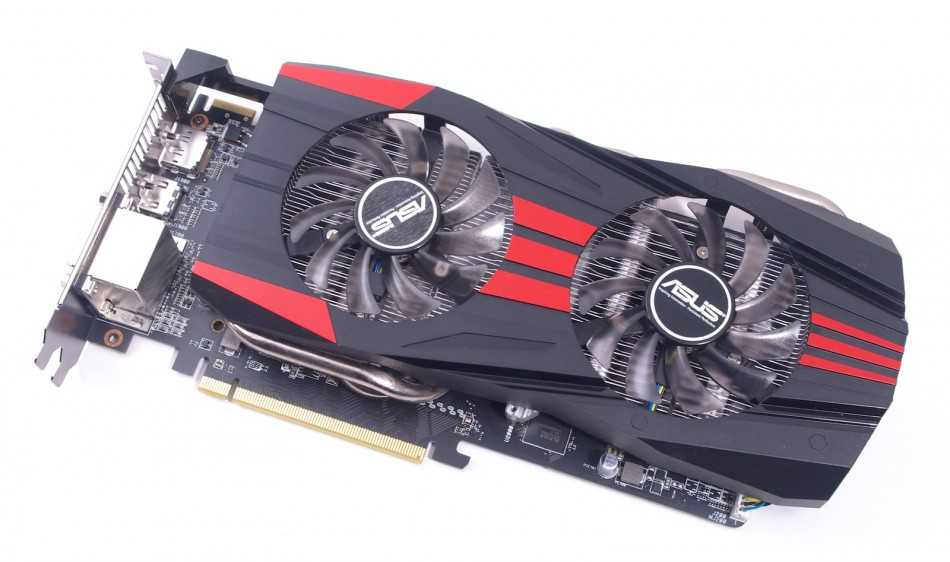 |
||
| low / 768p | 100−110 | 110−120 |
| medium / 768p | 90−95 | 100−110 |
| high / 1080p | 40−45 | 50−55 |
| ultra / 1080p | 16−18 | 21−24 |
| QHD / 1440p | 7−8 | 10−12 |
| The average gaming FPS of Radeon R9 270X in Grand Theft Auto V is 17% more, than GeForce GTX 750 Ti. | ||
| high / 1080p | 12−14 | 16−18 |
| ultra / 1080p | 10−11 | 12−14 |
| QHD / 1440p | 10−11 | 12−14 |
| 4K / 2160p | 3−4 | 4−5 |
| low / 720p | 40−45 | 45−50 |
| medium / 1080p | 18−20 | 21−24 |
The average gaming FPS of Radeon R9 270X in Metro Exodus is 18% more, than GeForce GTX 750 Ti. |
||
| low / 768p | 120−130 | 120−130 |
| medium / 1080p | 110−120 | 110−120 |
| GeForce GTX 750 Ti and Radeon R9 270X have the same average FPS in Minecraft. | ||
| ultra / 1080p | 14−16 | 14−16 |
| low / 720p | 70−75 | 80−85 |
| medium / 1080p | 18−20 | 18−20 |
| The average gaming FPS of Radeon R9 270X in PLAYERUNKNOWN’S BATTLEGROUNDS is 8% more, than GeForce GTX 750 Ti. | ||
| high / 1080p | 14−16 | 18−20 |
| ultra / 1080p | 10−11 | 12−14 |
| QHD / 1440p | 1−2 | 4−5 |
| 4K / 2160p | 1−2 | 3−4 |
| low / 720p | 35−40 | 45−50 |
| medium / 1080p | 21−24 | 24−27 |
The average gaming FPS of Radeon R9 270X in Red Dead Redemption 2 is 28% more, than GeForce GTX 750 Ti. |
||
| low / 768p | 70−75 | 90−95 |
| medium / 768p | 45−50 | 55−60 |
| high / 1080p | 24−27 | 30−35 |
| ultra / 1080p | 14−16 | 18−20 |
| 4K / 2160p | 8−9 | 10−11 |
| The average gaming FPS of Radeon R9 270X in The Witcher 3: Wild Hunt is 27% more, than GeForce GTX 750 Ti. | ||
| low / 768p | 90−95 | 90−95 |
| medium / 768p | 60−65 | 60−65 |
| ultra / 1080p | 40−45 | 45−50 |
| high / 768p | 55−60 | 55−60 |
The average gaming FPS of Radeon R9 270X in World of Tanks is 3% more, than GeForce GTX 750 Ti.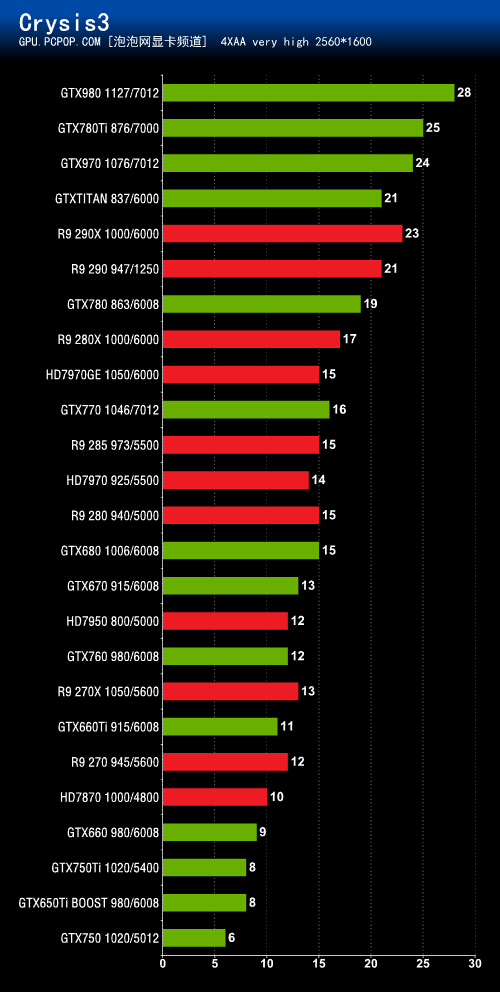 |
||
Full Specs
| GeForce GTX 750 Ti | Radeon R9 270X | |
| Architecture | Maxwell | GCN |
| Code name | GM107 | Curacao XT |
| Type | Desktop | Desktop |
| Release date | 18 February 2014 | 8 October 2013 |
| Pipelines | 640 | 1280 |
| Core clock speed | 1020 MHz | |
| Boost Clock | 1085 MHz | 1050 MHz |
| Transistor count | 1,870 million | 2,800 million |
| Manufacturing process technology | 28 nm | 28 nm |
| Texture fill rate | 43. 40 40 |
84.00 |
| Floating-point performance | 1,389 gflops | 2,688 gflops |
| Length | 5.7″ (14.5 cm) | |
| Memory bus width | 128 Bit | 256 Bit |
| Memory clock speed | 5.4 GB/s | |
| Memory bandwidth | 86.4 GB/s | 179.2 GB/s |
| Shared memory | — | — |
| DirectX | 12 (11_0) | |
| Shader Model | 5.1 | 5.1 |
| OpenGL | 4.4 | 4.6 |
| OpenCL | 1.2 | 1.2 |
| Vulkan | 1.1.126 | + |
| CUDA | + | |
| Monero / XMR (CryptoNight) | 0. 25 kh/s 25 kh/s |
|
| FreeSync | + | |
| CUDA cores | 640 | |
| Bus support | PCI Express 3.0 | PCIe 3.0 |
| Height | 4.376″ (11.1 cm) | |
| Multi monitor support | 4 displays | |
| HDMI | + | + |
| HDCP | + | |
| Maximum VGA resolution | 2048×1536 | |
| Audio input for HDMI | Internal | |
| 3D Gaming | + | |
| 3D Vision | + | |
| 3D Vision Live | + | |
| Bitcoin / BTC (SHA256) | 183 Mh/s | 318 Mh/s |
| Eyefinity | + | |
| HD3D | + | |
| TrueAudio | + | |
| Design | reference | |
| DisplayPort support | + | |
| CrossFire | + | |
| DDMA audio | + | |
| Decred / DCR (Decred) | 0. 51 Gh/s 51 Gh/s |
|
| Ethereum / ETH (DaggerHashimoto) | 2.3 Mh/s | 30 Mh/s |
| Zcash / ZEC (Equihash) | 74.4 Sol/s | 163 Sol/s |
| AppAcceleration | + | |
| Blu Ray 3D | + | |
| LiquidVR | + | |
| TressFX | + | |
| UVD | + | |
|
Check Price |
Check Price |
Similar compares
- GeForce GTX 750 Ti vs GeForce GTX 660
- GeForce GTX 750 Ti vs Radeon HD 6970M Crossfire
- Radeon R9 270X vs GeForce GTX 660
- Radeon R9 270X vs Radeon HD 6970M Crossfire
- GeForce GTX 750 Ti vs Radeon Sky 500
- GeForce GTX 750 Ti vs Radeon R9 M485X
- Radeon R9 270X vs Radeon Sky 500
- Radeon R9 270X vs Radeon R9 M485X
GeForce GTX 750 Ti vs Radeon R9 270X
GeForce GTX 750 Ti vs Radeon R9 270X
- Home
- VGA Benchmarks
- GeForce GTX 750 Ti vs Radeon R9 270X
-
GeForce GTX 750 Ti
100%
-
Radeon R9 270X
155%
Relative performance
-
GeForce GTX 750 Ti
100%
-
Radeon R9 270X
125%
Relative performance
Reasons to consider GeForce GTX 750 Ti |
120 watts lower power draw.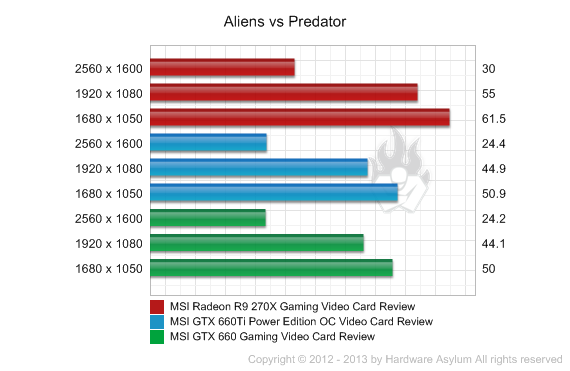 This might be a strong point if your current power supply is not enough to handle the Radeon R9 270X . This might be a strong point if your current power supply is not enough to handle the Radeon R9 270X . |
| Supports PhysX |
| Supports G-Sync |
| Supports ShadowPlay (allows game streaming/recording with minimum performance penalty) |
| Based on an outdated architecture (Nvidia Maxwell), there may be no performance optimizations for current games and applications |
Reasons to consider Radeon R9 270X |
| 25% higher gaming performance. |
| Supports Direct3D 12 Async Compute |
| Supports ReLive (allows game streaming/recording with minimum performance penalty) |
| Supports Mantle |
| Based on an outdated architecture (AMD GCN), there may be no performance optimizations for current games and applications |
HWBench recommends Radeon R9 270X
The Radeon R9 270X is the better performing card based on the game benchmark suite used (9 combinations of games and resolutions).
Core Configuration
| GeForce GTX 750 Ti | Radeon R9 270X | |||
|---|---|---|---|---|
| GPU Name | GM107 (GM107-400-A2) | vs | Curacao (Curacao XT) | |
| Fab Process | 28 nm | vs | 28 nm | |
| Die Size | 148 mm² | vs | 212 mm² | |
| Transistors | 1,870 million | vs | 2,800 million | |
| Shaders | 640 | vs | 1280 | |
| Compute Units | 5 | vs | 20 | |
| Core clock | 1020 MHz | vs | 1000 MHz | |
| ROPs | 16 | vs | 32 | |
| TMUs | 40 | vs | 80 |
Memory Configuration
| GeForce GTX 750 Ti | Radeon R9 270X | |||
|---|---|---|---|---|
| Memory Type | GDDR5 | vs | GDDR5 | |
| Bus Width | 128 bit | vs | 256 bit | |
| Memory Speed | 1350 MHz 5400 MHz effective |
vs | 1400 MHz
5600 MHz effective |
|
| Memory Size | 2048 Mb | vs | 2048 Mb |
Additional details
| GeForce GTX 750 Ti | Radeon R9 270X | |||
|---|---|---|---|---|
| TDP | 60 watts | vs | 180 watts | |
| Release Date | 18 Feb 2014 | vs | 8 Oct 2013 |
-
GeForce GTX 750 Ti
16.
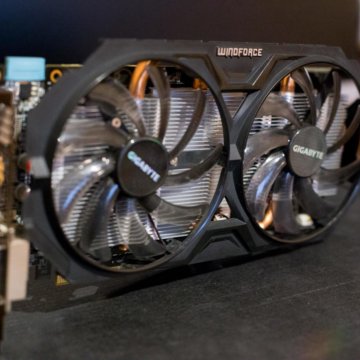 32 GP/s
32 GP/s -
Radeon R9 270X
32.00 GP/s
GigaPixels — higher is better
-
GeForce GTX 750 Ti
40.80 GT/s
-
Radeon R9 270X
80.00 GT/s
GigaTexels — higher is better
-
GeForce GTX 750 Ti
86.40 GB/s
-
Radeon R9 270X
179.00 GB/s
GB/s — higher is better
-
GeForce GTX 750 Ti
1305.60 GFLOPs
-
Radeon R9 270X
2560.00 GFLOPs
GFLOPs — higher is better
-
GeForce GTX 750 Ti
5610
-
Radeon R9 270X
8700
Points (higher is better)
DX11, Ultra Quality,2x MSAA,16x AF, HBAO
-
GeForce GTX 750 Ti
37
-
Radeon R9 270X
53
FPS (higher is better)
DX11, Ultra Quality,DDOD, FX AA
-
GeForce GTX 750 Ti
48
-
Radeon R9 270X
52
FPS (higher is better)
DX11,Very High Quality, FXAA
-
GeForce GTX 750 Ti
25
-
Radeon R9 270X
33
FPS (higher is better)
DX11, High Quality, 2x MSAA, 16x AF
-
GeForce GTX 750 Ti
36
-
Radeon R9 270X
52
FPS (higher is better)
DX11, Ultra Quality, 4xMSAA
-
GeForce GTX 750 Ti
36
-
Radeon R9 270X
48
FPS (higher is better)
DX11, Ultra, DDOD, FXAA
-
GeForce GTX 750 Ti
30
-
Radeon R9 270X
34
FPS (higher is better)
DX11, Max Details, 16:1 AF, 2xMSAA
-
GeForce GTX 750 Ti
23
-
Radeon R9 270X
28
FPS (higher is better)
DX11, High Quality, 2x MSAA, 16x AF
-
GeForce GTX 750 Ti
36
-
Radeon R9 270X
39
FPS (higher is better)
DX11, Max Details, 16:1 AF, 2xMSAA
-
GeForce GTX 750 Ti
34
-
Radeon R9 270X
42
FPS (higher is better)
| VS | ||
| GeForce GTX 750 Ti | Radeon RX Vega 11 |
| VS | ||
| GeForce GTX 750 Ti | Radeon Vega 8 |
| VS | ||
| Radeon R9 270X | Radeon RX 550 |
| VS | ||
| Radeon R9 270X | Radeon R9 370X |
| VS | ||
| Radeon RX 560X | Radeon RX 560D |
| VS | ||
| Radeon RX 560D | Radeon RX 560 |
Please enable JavaScript to view the comments powered by Disqus.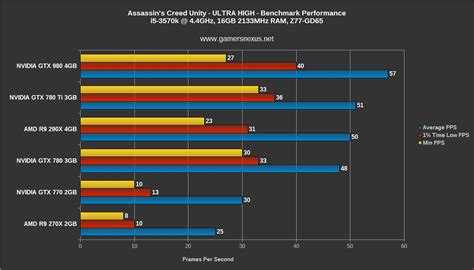
AMD Radeon R9 270X vs Nvidia GeForce GTX 750 Ti
|
|
|
|
|
AMD Radeon R9 270X vs Nvidia GeForce GTX 750 Ti
Comparison of the technical characteristics between the graphics cards, with AMD Radeon R9 270X on one side and Nvidia GeForce GTX 750 Ti on the other side. The first is dedicated to the desktop sector, it has 1280 shading units, a maximum frequency of 1,1 GHz, its lithography is 28 nm. The second is used on the desktop segment, it includes 640 shading units, a maximum frequency of 1,1 GHz, its lithography is 28 nm. The following table also compares the boost clock, the number of shading units (if indicated), of execution units, the amount of cache memory, the maximum memory capacity, the memory bus width, the release date, the number of PCIe lanes, the values obtained in various benchmarks.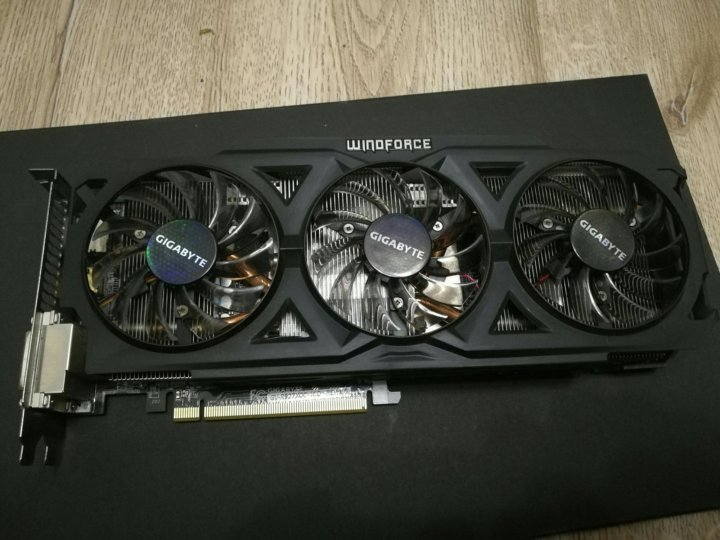
Note: Commissions may be earned from the links above.
This page contains references to products from one or more of our advertisers. We may receive compensation when you click on links to those products. For an explanation of our advertising policy, please visit this page.
Specifications:
| Graphics card | AMD Radeon R9 270X | Nvidia GeForce GTX 750 Ti | ||||||
| Market (main) | Desktop | Desktop | ||||||
| Release date | Q4 2013 | Q1 2014 | ||||||
| Model number | 215-0848004, Curacao XT | GM107-400-A2 | ||||||
| GPU name | Curacao | GM107 | ||||||
| Architecture | GCN 1. 0 0 |
Maxwell | ||||||
| Generation | Volcanic Islands R9 200 | GeForce 700 | ||||||
| Lithography | 28 nm | 28 nm | ||||||
| Transistors | 4.313.000.000 | 1.870.000.000 | ||||||
| Bus interface | PCIe 3.0 x16 | PCIe 3.0 x16 | ||||||
| GPU base clock | 1,00 GHz | 1,02 GHz | ||||||
| GPU boost clock | 1,05 GHz | 1,09 GHz | ||||||
| Memory frequency | 1.400 MHz | 1.350 MHz | ||||||
| Effective memory speed | 5,6 GB/s | 5,4 GB/s | ||||||
| Memory size | 2 GB | 2 GB | ||||||
| Memory type | GDDR5 | GDDR5 | ||||||
| Memory bus | 256 Bit | 128 Bit | ||||||
| Memory bandwidth | 179,2 GB/s | 86,4 GB/s | ||||||
| TDP | 180 W | 60 W | ||||||
| Suggested PSU | 450W ATX Power Supply | 300W ATX Power Supply | ||||||
| Multicard technology | — | — | ||||||
| Outputs |
2x DVI |
2x DVI |
||||||
| Cores (compute units, SM, SMX) | 20 | 5 | ||||||
| Shading units (cuda cores) | 1.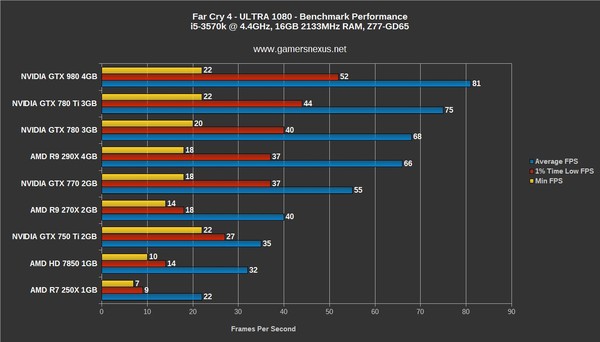 280 280 |
640 | ||||||
| TMUs | 80 | 40 | ||||||
| ROPs | 32 | 16 | ||||||
| Cache memory | 512 KB | 2 MB | ||||||
| Pixel fillrate | 33,6 GP/s | 17,4 GP/s | ||||||
| Texture fillrate | 84,0 GT/s | 43,4 GT/s | ||||||
| Performance FP32 (float) | 2,7 TFLOPS | 1,4 TFLOPS | ||||||
| Performance FP64 (double) | 168 GFLOPS | 43,4 GFLOPS | ||||||
| Amazon | ||||||||
| eBay |
Note: Commissions may be earned from the links above.
Price: For technical reasons, we cannot currently display a price less than 24 hours, or a real-time price. This is why we prefer for the moment not to show a price. You should refer to the respective online stores for the latest price, as well as availability.
We can better compare what are the technical differences between the two graphics cards.
Performances :
Performance comparison between the two processors, for this we consider the results generated on benchmark software such as Geekbench 4.
| FP32 Performance in GFLOPS | |
|---|---|
| AMD Radeon R9 270X |
2.688 |
| Nvidia GeForce GTX 750 Ti |
1.389 |
The difference is 94%.
Note: Commissions may be earned from the links above. These scores are only an
average of the performances got with these graphics cards, you may get different results.
Single precision floating point format, also known as FP32, is a computer number format that typically occupies 32 bits in PC memory. This represents a wide dynamic range of numeric values that employs a floating point.
See also:
AMD Radeon R9 270
Equivalence:
AMD Radeon R9 270X Nvidia equivalentNvidia GeForce GTX 750 Ti AMD equivalent
Disclaimer:
When you click on links to various merchants on this site and make a purchase, this can result in this site earning a commission. Affiliate programs and affiliations include, but are not limited to, the eBay Partner Network.
As an Amazon Associate I earn from qualifying purchases.
This page includes affiliate links for which the administrator of GadgetVersus may earn a commission at no extra cost to you should you make a purchase. These links are indicated using the hashtag #ad.
Information:
We do not assume any responsibility for the data displayed on our website. Please use at your own risk. Some or all of this data may be out of date or incomplete, please refer to the technical page on the respective manufacturer’s website to find the latest up-to-date information regarding the specifics of these products.
0024
2.56 TFLOPS vs 1.31 TFLOPS
32 GPixel/s vs 16.3 GPixel/s
179GB/s vs 86.4GB/s
256bit vs 128bit
1280 vs 640
2800 million vs 1870 million
80 vs 40
Why is Nvidia GeForce GTX 750 Ti better than AMD Radeon R9 270X?
- 120W below TDP?
60W vs 180W - 14°C lower GPU temperature during boot?
62°C vs 76°C - 5°C lower GPU idle temperature?
25°C vs 30°C - 13.
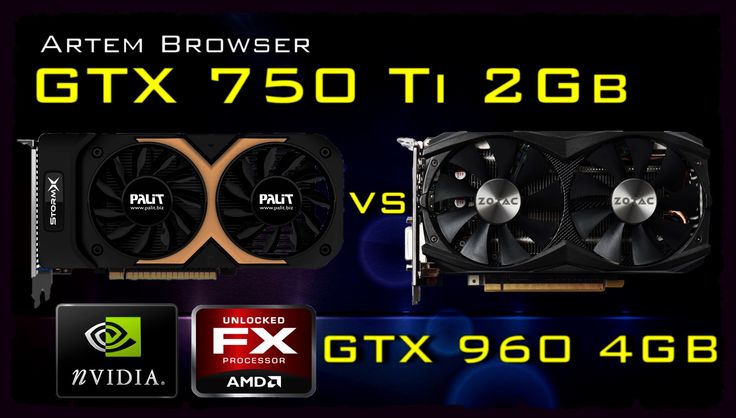 3dB lower noise floor at full load?
3dB lower noise floor at full load?
38.3dB vs 51.6dB - 2.2dB lower idle noise?
37.8dB vs 40dB - 5W lower standby power consumption?
73W vs 78W - 129mm narrower?
145mm vs 274mm - 9mm lower?
111mm vs 120mm
Which comparisons are the most popular?
AMD Radeon R9 270X
vs
Nvidia GeForce GTX 1050
Nvidia GeForce GTX 750 Ti
vs
AMD Radeon RX 550
AMD Radeon R9 270X
vs
AMD Radeon RX 550
Nvidia GeForce GTX 750 Ti
vs
Nvidia GeForce GTX 1050
AMD Radeon R9 270X
vs
Gigabyte GeForce GTX 1050 Ti
Nvidia GeForce GTX 750 Ti
vs
Nvidia GeForce GT 1030 DDR4
AMD Radeon R9 270X
vs
AMD Radeon RX 580
NVIDIA GEFORCE GTX 750 TI
VS
NVIDIA GEFORCE GTX 16504
AMD Radeon R9 270x
AMD Radeon RADEON RADEON RADEON R70003
vs
XFX HD 6950 XXX 1GB
AMD Radeon R9 270X
vs
AMD Radeon RX Vega 8
Nvidia GeForce GTX 750 Ti
vs
Nvidia GeForce 940MX
AMD Radeon R9 270X
vs
AMD Radeon RX 570
NVIDIA GEFORCE GTX 750 TI
VS
NVIDIA GEFORCE GTX 750
AMD Radeon R9 270x
AMD RADEON RADEON RADION RADION RADION RADION RADION RADION RX 560
000 NVIDIA GTOR0003
vs
Nvidia GeForce MX150
AMD Radeon R9 270X
vs
Nvidia GeForce GTX 960
Nvidia GeForce GTX 750 Ti
vs
AMD Radeon Vega 8
Nvidia GeForce GTX 750 Ti
vs
Nvidia GeForce GTX 960
Price Match
User Reviews
Overall Rating
AMD Radeon R9 270X
1 User Reviews
AMD Radeon R9 270X
7.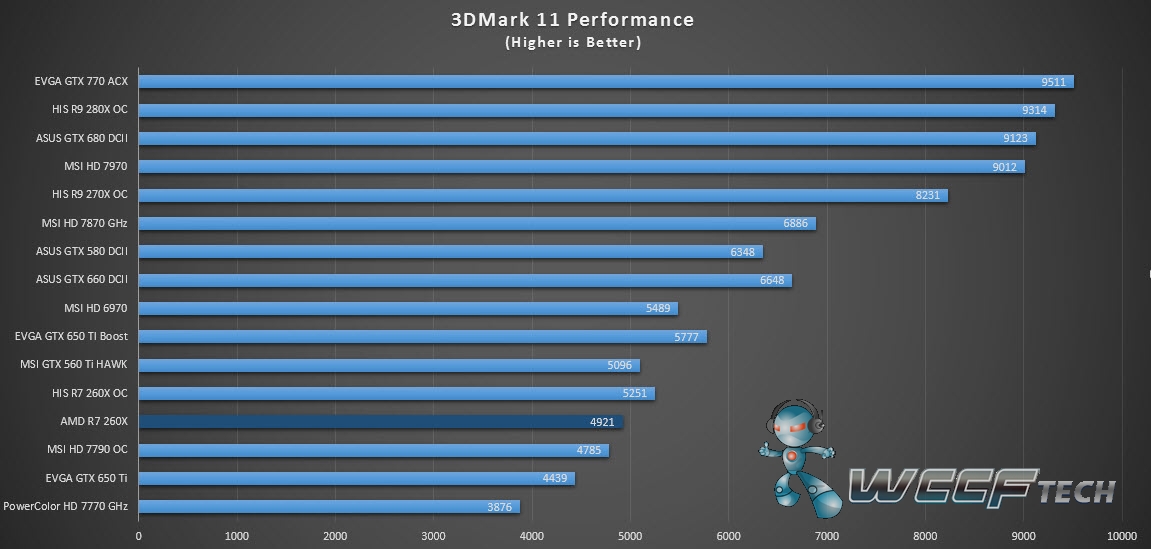 0 /10
0 /10
1 reviews of users
NVIDIA GeForce GTX 750 TI
2 Reviews of users
NVIDIA GeForce GTX 750 TI
/10
9000 2 reviews of users 9000 and qualities
10.0 /10
1 Votes
10.0 /10
2 Votes
Games
7.0 /10
1 Votes
8.5 /10
2 Votes
performance
6.0272 /10
1 Votes
7.5 /10
2 Votes 9000 9000
9000 9000 9000 9000 9000 9000 9000 9000 9000 9000 9000 9000 9000 9000 9000 9000 9000 9000 9000 9000 9000 9000 9000 9000 9000 9000 9000 9000 9000 9000 9000 9000 9000 9000 9000 9000 9000 9000 VOTES
5.5 /10
2 Votes
Reliability
10.0 /10
1 Votes
10.0 /10
2 Votes
performance
performance performance
0023
1.GPU clock speed
1050MHz
1020MHz
The graphics processing unit (GPU) has a higher clock speed.
2.turbo GPU
1050MHz
1085MHz
When the GPU is running below its limits, it can jump to a higher clock speed to increase performance.
3.pixel rate
32 GPixel/s
16.3 GPixel/s
The number of pixels that can be displayed on the screen every second.
4.flops
2.56 TFLOPS
1.31 TFLOPS
FLOPS is a measurement of GPU processing power.
5.texture size
80 GTexels/s
40.8 GTexels/s
Number of textured pixels that can be displayed on the screen every second.
6.GPU memory speed
1400MHz
1350MHz
Memory speed is one aspect that determines memory bandwidth.
7.shading patterns
Shading units (or stream processors) are small processors in a graphics card that are responsible for processing various aspects of an image.
8.textured units (TMUs)
TMUs accept textured units and bind them to the geometric layout of the 3D scene. More TMUs generally means texture information is processed faster.
9 ROPs imaging units
ROPs are responsible for some of the final steps of the rendering process, such as writing the final pixel data to memory and performing other tasks such as anti-aliasing to improve the appearance of graphics.
Memory
1.memory effective speed
5600MHz
5400MHz
The effective memory clock frequency is calculated from the memory size and data transfer rate. A higher clock speed can give better performance in games and other applications.
2.max memory bandwidth
179GB/s
86.4GB/s
This is the maximum rate at which data can be read from or stored in memory.
3. VRAM
VRAM
VRAM (video RAM) is the dedicated memory of the graphics card. More VRAM usually allows you to run games at higher settings, especially for things like texture resolution.
4.memory bus width
256bit
128bit
Wider memory bus means it can carry more data per cycle. This is an important factor in memory performance, and therefore the overall performance of the graphics card.
5. GDDR memory versions
Later versions of GDDR memory offer improvements such as higher data transfer rates, which improve performance.
6. Supports memory debug code
✖AMD Radeon R9 270X
✖Nvidia GeForce GTX 750 Ti
Memory debug code can detect and fix data corruption. It is used when necessary to avoid distortion, such as in scientific computing or when starting a server.
Functions
1. DirectX version
DirectX version
DirectX is used in games with a new version that supports better graphics.
2nd version of OpenGL
The newer version of OpenGL, the better graphics quality in games.
OpenCL version 3.
Some applications use OpenCL to use the power of the graphics processing unit (GPU) for non-graphical computing. Newer versions are more functional and better quality.
4. Supports multi-monitor technology
✔AMD Radeon R9 270X
✔Nvidia GeForce GTX 750 Ti
The video card has the ability to connect multiple screens. This allows you to set up multiple monitors at the same time to create a more immersive gaming experience, such as a wider field of view.
5.GPU Temperature at Boot
Lower boot temperature means that the card generates less heat and the cooling system works better.
6.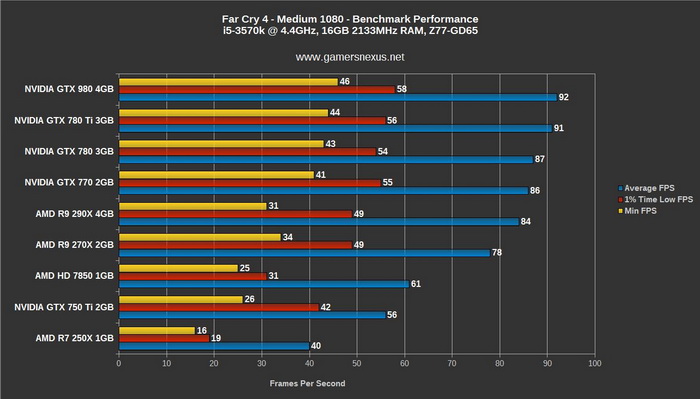 supports ray tracing
supports ray tracing
✖AMD Radeon R9 270X
✖Nvidia GeForce GTX 750 Ti
Ray tracing is an advanced light rendering technique that provides more realistic lighting, shadows and reflections in games.
7.Supports 3D
✔AMD Radeon R9 270X
✔Nvidia GeForce GTX 750 Ti
Allows you to view in 3D (if you have a 3D screen and glasses).
8.supports DLSS
✖AMD Radeon R9 270X
✖Nvidia GeForce GTX 750 Ti
DLSS (Deep Learning Super Sampling) is an AI based scaling technology. This allows the graphics card to render games at lower resolutions and upscale them to higher resolutions with near-native visual quality and improved performance. DLSS is only available in some games.
9. PassMark result (G3D)
This test measures the graphics performance of a graphics card. Source: Pass Mark.
Ports
1. has HDMI output
has HDMI output
✔AMD Radeon R9 270X
✔Nvidia GeForce GTX 750 Ti
Devices with HDMI or mini HDMI ports can stream HD video and audio to an attached display.
2.HDMI connectors
More HDMI connectors allow you to connect multiple devices at the same time, such as game consoles and TVs.
3rd HDMI version
Unknown. Help us offer a price. (AMD Radeon R9 270X)
Unknown. Help us offer a price. (Nvidia GeForce GTX 750 Ti)
Newer versions of HDMI support higher bandwidth, resulting in higher resolutions and frame rates.
4. DisplayPort outputs
Allows connection to a display using DisplayPort.
5.DVI outputs
Allows connection to a display using DVI.
Mini DisplayPort 6.outs
Allows connection to a display using Mini DisplayPort.
Price comparison
Cancel 9Fury XRadeon R9 FuryRadeon R9 NanoRadeon R9 390XRadeon R9 390Radeon R9 380XRadeon R9 380Radeon R7 370Radeon R7 360Radeon R9 295X2Radeon R9 290XRadeon R9 290Radeon R9 280XRadeon R9 285Radeon R9 280Radeon R9 270XRadeon R9 270Radeon R7 265Radeon R7 260XRadeon R7 260Radeon R7 250Radeon R7 240Radeon HD 7970Radeon HD 7950Radeon HD 7870 XTRadeon HD 7870Radeon HD 7850Radeon HD 7790Radeon HD 7770Radeon HD 7750Radeon HD 6990Radeon HD 6970Radeon HD 6950Radeon HD 6930Radeon HD 6870Radeon HD 6850Radeon HD 6790Radeon HD 6770Radeon HD 6750Radeon HD 6670 GDDR5Radeon HD 6670 GDDR3Radeon HD 6570 GDDR5Radeon HD 6570 GDDR3Radeon HD 6450 GDDR5Radeon HD 6450 GDDR3Radeon HD 5570 GDDR5Radeon HD 3750Radeon HD 3730Radeon HD 5970Radeon HD 5870Radeon HD 5850Radeon HD 5830Radeon HD 5770Radeon HD 5750Radeon HD 5670Radeon HD 5570Radeon HD 5550Radeon HD 5450Radeon HD 4890Radeon HD 4870 X2Radeon HD 4870Radeon HD 4860Radeon HD 4850 X2Radeon HD 4850Radeon HD 4830Radeon HD 4790Radeon HD 4770Radeon HD 4730Radeon HD 4670Radeon HD 4650Radeon HD 4550Radeon HD 4350Radeon HD 4350Radeon HD 43500 (IGP 890GX) Radeon HD 4200 (IGP)Radeon HD 3870 X2Radeon HD 3870Radeon HD 3850Radeon HD 3690Radeon HD 3650Radeon HD 3470Radeon HD 3450Radeon HD 3300 (IGP)Radeon HD 3200 (IGP)Radeon HD 3100 (IGP)Radeon HD 2900 XT 1Gb GDDR4Radeon HD 2900 XTRadeon HD 2900 PRORadeon HD 2900 GTRadeon HD 2600 XT DUALRadeon HD 2600 XT GDDR4Radeon HD 2600 XTRadeon HD 2600 PRORadeon HD 2400 XTRadeon HD 2400 PRORadeon HD 2350Radeon X1950 CrossFire EditionRadeon X1950 XTXRadeon X1950 XTRadeon X1950 PRO DUALRadeon X1950 PRORadeon X1950 GTRadeon X1900 CrossFire EditionRadeon X1900 XTXRadeon X1900 XTRadeon X1900 GT Rev2Radeon X1900 GTRadeon X1800 CrossFire EditionRadeon X1800 XT PE 512MBRadeon X1800 XTRadeon X1800 XLRadeon X1800 GTORadeon X1650 XTRadeon X1650 GTRadeon X1650 XL DDR3Radeon X1650 XL DDR2Radeon X1650 PRO on RV530XTRadeon X1650 PRO on RV535XTRadeon X1650Radeon X1600 XTRadeon X1600 PRORadeon X1550 PRORadeon X1550Radeon X1550 LERadeon X1300 XT on RV530ProRadeon X1300 XT on RV535ProRadeon X1300 CERadeon X1300 ProRadeon X1300Radeon X1300 LERadeon X1300 HMRadeon X1050Radeon X850 XT Platinum EditionRadeon X850 XT CrossFire EditionRadeon X850 XT Radeon X850 Pro Radeon X800 XT Platinum EditionRadeon X800 XTRadeon X800 CrossFire EditionRadeon X800 XLRadeon X800 GTO 256MBRadeon X800 GTO 128MBRadeon X800 GTO2 256MBRadeon X800Radeon X800 ProRadeon X800 GT 256MBRadeon X800 GT 128MBRadeon X800 SERadeon X700 XTRadeon X700 ProRadeon X700Radeon X600 XTRadeon X600 ProRadeon X550 XTRadeon X550Radeon X300 SE 128MB HM-256MBR adeon X300 SE 32MB HM-128MBRadeon X300Radeon X300 SERadeon 9800 XTRadeon 9800 PRO /DDR IIRadeon 9800 PRO /DDRRadeon 9800Radeon 9800 SE-256 bitRadeon 9800 SE-128 bitRadeon 9700 PRORadeon 9700Radeon 9600 XTRadeon 9600 PRORadeon 9600Radeon 9600 SERadeon 9600 TXRadeon 9550 XTRadeon 9550Radeon 9550 SERadeon 9500 PRORadeon 9500 /128 MBRadeon 9500 /64 MBRadeon 9250Radeon 9200 PRORadeon 9200Radeon 9200 SERadeon 9000 PRORadeon 9000Radeon 9000 XTRadeon 8500 LE / 9100Radeon 8500Radeon 7500Radeon 7200 Radeon LE Radeon DDR OEM Radeon DDR Radeon SDR Radeon VE / 7000Rage 128 GL Rage 128 VR Rage 128 PRO AFRRage 128 PRORage 1283D Rage ProNVIDIAGeForce RTX 4090GeForce RTX 4080 16GBGeForce RTX 4080 12GBGeForce RTX 3090 TiGeForce RTX 3090GeForce RTX 3080 TiGeForce RTX 3080 12GBGeForce RTX 3080GeForce RTX 3070 TiGeForce RTX 3070GeForce RTX 3060 TiGeForce RTX 3060 rev. 2GeForce RTX 3060GeForce RTX 3050GeForce RTX 2080 TiGeForce RTX 2080 SuperGeForce RTX 2080GeForce RTX 2070 SuperGeForce RTX 2070GeForce RTX 2060 SuperGeForce RTX 2060GeForce GTX 1660 TiGeForce GTX 1660 SuperGeForce GTX 1660GeForce GTX 1650 SuperGeForce GTX 1650 GDDR6GeForce GTX 1650 rev.3GeForce GTX 1650 rev.2GeForce GTX 1650GeForce GTX 1630GeForce GTX 1080 TiGeForce GTX 1080GeForce GTX 1070 TiGeForce GTX 1070GeForce GTX 1060GeForce GTX 1060 3GBGeForce GTX 1050 TiGeForce GTX 1050 3GBGeForce GTX 1050GeForce GT 1030GeForce GTX Titan XGeForce GTX 980 TiGeForce GTX 980GeForce GTX 970GeForce GTX 960GeForce GTX 950GeForce GTX TitanGeForce GTX 780 TiGeForce GTX 780GeForce GTX 770GeForce GTX 760GeForce GTX 750 TiGeForce GTX 750GeForce GT 740GeForce GT 730GeForce GTX 690GeForce GTX 680GeForce GTX 670GeForce GTX 660 TiGeForce GTX 660GeForce GTX 650 Ti BoostGeForce GTX 650 TiGeForce GTX 650GeForce GT 640 rev.2GeForce GT 640GeForce GT 630 rev.2GeForce GT 630GeForce GTX 590GeForce GTX 580GeForce GTX 570GeForce GTX 560 TiGeForce GTX 560GeForce GTX 550 TiGeForce GT 520GeForce GTX 480GeForce GTX 470GeForce GTX 465GeForce GTX 460 SEGeForce GTX 460 1024MBGeForce GTX 460 768MBGeForce GTS 450GeForce GT 440 GDDR5GeForce GT 440 GDDR3GeForce GT 430GeForce GT 420GeForce GTX 295GeForce GTX 285GeForce GTX 280GeForce GTX 275GeForce GTX 260 rev.
2GeForce RTX 3060GeForce RTX 3050GeForce RTX 2080 TiGeForce RTX 2080 SuperGeForce RTX 2080GeForce RTX 2070 SuperGeForce RTX 2070GeForce RTX 2060 SuperGeForce RTX 2060GeForce GTX 1660 TiGeForce GTX 1660 SuperGeForce GTX 1660GeForce GTX 1650 SuperGeForce GTX 1650 GDDR6GeForce GTX 1650 rev.3GeForce GTX 1650 rev.2GeForce GTX 1650GeForce GTX 1630GeForce GTX 1080 TiGeForce GTX 1080GeForce GTX 1070 TiGeForce GTX 1070GeForce GTX 1060GeForce GTX 1060 3GBGeForce GTX 1050 TiGeForce GTX 1050 3GBGeForce GTX 1050GeForce GT 1030GeForce GTX Titan XGeForce GTX 980 TiGeForce GTX 980GeForce GTX 970GeForce GTX 960GeForce GTX 950GeForce GTX TitanGeForce GTX 780 TiGeForce GTX 780GeForce GTX 770GeForce GTX 760GeForce GTX 750 TiGeForce GTX 750GeForce GT 740GeForce GT 730GeForce GTX 690GeForce GTX 680GeForce GTX 670GeForce GTX 660 TiGeForce GTX 660GeForce GTX 650 Ti BoostGeForce GTX 650 TiGeForce GTX 650GeForce GT 640 rev.2GeForce GT 640GeForce GT 630 rev.2GeForce GT 630GeForce GTX 590GeForce GTX 580GeForce GTX 570GeForce GTX 560 TiGeForce GTX 560GeForce GTX 550 TiGeForce GT 520GeForce GTX 480GeForce GTX 470GeForce GTX 465GeForce GTX 460 SEGeForce GTX 460 1024MBGeForce GTX 460 768MBGeForce GTS 450GeForce GT 440 GDDR5GeForce GT 440 GDDR3GeForce GT 430GeForce GT 420GeForce GTX 295GeForce GTX 285GeForce GTX 280GeForce GTX 275GeForce GTX 260 rev.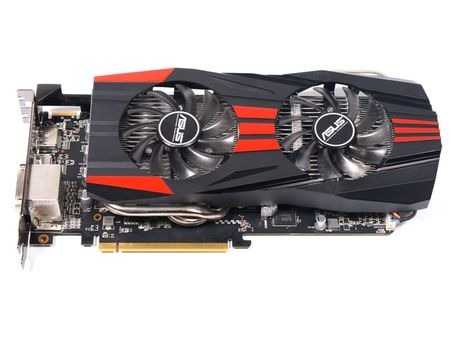 2GeForce GTX 260GeForce GTS 250GeForce GTS 240GeForce GT 240GeForce GT 230GeForce GT 220GeForce 210Geforce 205GeForce GTS 150GeForce GT 130GeForce GT 120GeForce G100GeForce 9800 GTX+GeForce 9800 GTXGeForce 9800 GTSGeForce 9800 GTGeForce 9800 GX2GeForce 9600 GTGeForce 9600 GSO (G94)GeForce 9600 GSOGeForce 9500 GTGeForce 9500 GSGeForce 9400 GTGeForce 9400GeForce 9300GeForce 8800 ULTRAGeForce 8800 GTXGeForce 8800 GTS Rev2GeForce 8800 GTSGeForce 8800 GTGeForce 8800 GS 768MBGeForce 8800 GS 384MBGeForce 8600 GTSGeForce 8600 GTGeForce 8600 GSGeForce 8500 GT DDR3GeForce 8500 GT DDR2GeForce 8400 GSGeForce 8300GeForce 8200GeForce 8100GeForce 7950 GX2GeForce 7950 GTGeForce 7900 GTXGeForce 7900 GTOGeForce 7900 GTGeForce 7900 GSGeForce 7800 GTX 512MBGeForce 7800 GTXGeForce 7800 GTGeForce 7800 GS AGPGeForce 7800 GSGeForce 7600 GT Rev.2GeForce 7600 GTGeForce 7600 GS 256MBGeForce 7600 GS 512MBGeForce 7300 GT Ver2GeForce 7300 GTGeForce 7300 GSGeForce 7300 LEGeForce 7300 SEGeForce 7200 GSGeForce 7100 GS TC 128 (512)GeForce 6800 Ultra 512MBGeForce 6800 UltraGeForce 6800 GT 256MBGeForce 6800 GT 128MBGeForce 6800 GTOGeForce 6800 256MB PCI-EGeForce 6800 128MB PCI-EGeForce 6800 LE PCI-EGeForce 6800 256MB AGPGeForce 6800 128MB AGPGeForce 6800 LE AGPGeForce 6800 GS AGPGeForce 6800 GS PCI-EGeForce 6800 XTGeForce 6600 GT PCI-EGeForce 6600 GT AGPGeForce 6600 DDR2GeForce 6600 PCI-EGeForce 6600 AGPGeForce 6600 LEGeForce 6200 NV43VGeForce 6200GeForce 6200 NV43AGeForce 6500GeForce 6200 TC 64(256)GeForce 6200 TC 32(128)GeForce 6200 TC 16(128)GeForce PCX5950GeForce PCX 5900GeForce PCX 5750GeForce PCX 5550GeForce PCX 5300GeForce PCX 4300GeForce FX 5950 UltraGeForce FX 5900 UltraGeForce FX 5900GeForce FX 5900 ZTGeForce FX 5900 XTGeForce FX 5800 UltraGeForce FX 5800GeForce FX 5700 Ultra /DDR-3GeForce FX 5700 Ultra /DDR-2GeForce FX 5700GeForce FX 5700 LEGeForce FX 5600 Ultra (rev.
2GeForce GTX 260GeForce GTS 250GeForce GTS 240GeForce GT 240GeForce GT 230GeForce GT 220GeForce 210Geforce 205GeForce GTS 150GeForce GT 130GeForce GT 120GeForce G100GeForce 9800 GTX+GeForce 9800 GTXGeForce 9800 GTSGeForce 9800 GTGeForce 9800 GX2GeForce 9600 GTGeForce 9600 GSO (G94)GeForce 9600 GSOGeForce 9500 GTGeForce 9500 GSGeForce 9400 GTGeForce 9400GeForce 9300GeForce 8800 ULTRAGeForce 8800 GTXGeForce 8800 GTS Rev2GeForce 8800 GTSGeForce 8800 GTGeForce 8800 GS 768MBGeForce 8800 GS 384MBGeForce 8600 GTSGeForce 8600 GTGeForce 8600 GSGeForce 8500 GT DDR3GeForce 8500 GT DDR2GeForce 8400 GSGeForce 8300GeForce 8200GeForce 8100GeForce 7950 GX2GeForce 7950 GTGeForce 7900 GTXGeForce 7900 GTOGeForce 7900 GTGeForce 7900 GSGeForce 7800 GTX 512MBGeForce 7800 GTXGeForce 7800 GTGeForce 7800 GS AGPGeForce 7800 GSGeForce 7600 GT Rev.2GeForce 7600 GTGeForce 7600 GS 256MBGeForce 7600 GS 512MBGeForce 7300 GT Ver2GeForce 7300 GTGeForce 7300 GSGeForce 7300 LEGeForce 7300 SEGeForce 7200 GSGeForce 7100 GS TC 128 (512)GeForce 6800 Ultra 512MBGeForce 6800 UltraGeForce 6800 GT 256MBGeForce 6800 GT 128MBGeForce 6800 GTOGeForce 6800 256MB PCI-EGeForce 6800 128MB PCI-EGeForce 6800 LE PCI-EGeForce 6800 256MB AGPGeForce 6800 128MB AGPGeForce 6800 LE AGPGeForce 6800 GS AGPGeForce 6800 GS PCI-EGeForce 6800 XTGeForce 6600 GT PCI-EGeForce 6600 GT AGPGeForce 6600 DDR2GeForce 6600 PCI-EGeForce 6600 AGPGeForce 6600 LEGeForce 6200 NV43VGeForce 6200GeForce 6200 NV43AGeForce 6500GeForce 6200 TC 64(256)GeForce 6200 TC 32(128)GeForce 6200 TC 16(128)GeForce PCX5950GeForce PCX 5900GeForce PCX 5750GeForce PCX 5550GeForce PCX 5300GeForce PCX 4300GeForce FX 5950 UltraGeForce FX 5900 UltraGeForce FX 5900GeForce FX 5900 ZTGeForce FX 5900 XTGeForce FX 5800 UltraGeForce FX 5800GeForce FX 5700 Ultra /DDR-3GeForce FX 5700 Ultra /DDR-2GeForce FX 5700GeForce FX 5700 LEGeForce FX 5600 Ultra (rev.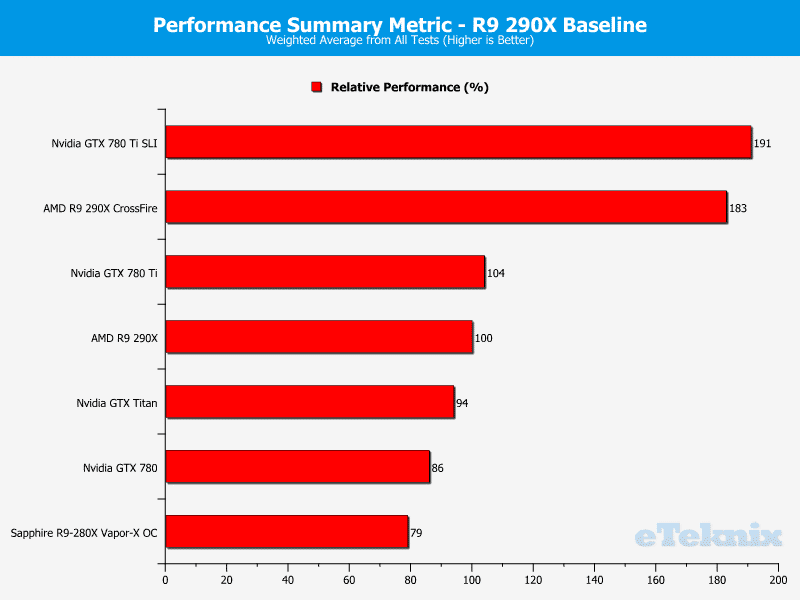 2)GeForce FX 5600 Ultra (rev.1)GeForce FX 5600 XTGeForce FX 5600GeForce FX 5500GeForce FX 5200 UltraGeForce FX 5200GeForce FX 5200 SEGeForce 4 Ti 4800GeForce 4 Ti 4800-SEGeForce 4 Ti 4200-8xGeForce 4 Ti 4600GeForce 4 Ti 4400GeForce 4 Ti 4200GeForce 4 MX 4000GeForce 4 MX 440-8x / 480GeForce 4 MX 460GeForce 4 MX 440GeForce 4 MX 440-SEGeForce 4 MX 420GeForce 3 Ti500GeForce 3 Ti200GeForce 3GeForce 2 Ti VXGeForce 2 TitaniumGeForce 2 UltraGeForce 2 PROGeForce 2 GTSGeForce 2 MX 400GeForce 2 MX 200GeForce 2 MXGeForce 256 DDRGeForce 256Riva TNT 2 UltraRiva TNT 2 PRORiva TNT 2Riva TNT 2 M64Riva TNT 2 Vanta LTRiva TNT 2 VantaRiva TNTRiva 128 ZXRiva 128 9Fury XRadeon R9 FuryRadeon R9 NanoRadeon R9 390XRadeon R9 390Radeon R9 380XRadeon R9 380Radeon R7 370Radeon R7 360Radeon R9 295X2Radeon R9 290XRadeon R9 290Radeon R9 280XRadeon R9 285Radeon R9 280Radeon R9 270XRadeon R9 270Radeon R7 265Radeon R7 260XRadeon R7 260Radeon R7 250Radeon R7 240Radeon HD 7970Radeon HD 7950Radeon HD 7870 XTRadeon HD 7870Radeon HD 7850Radeon HD 7790Radeon HD 7770Radeon HD 7750Radeon HD 6990Radeon HD 6970Radeon HD 6950Radeon HD 6930Radeon HD 6870Radeon HD 6850Radeon HD 6790Radeon HD 6770Radeon HD 6750Radeon HD 6670 GDDR5Radeon HD 6670 GDDR3Radeon HD 6570 GDDR5Radeon HD 6570 GDDR3Radeon HD 6450 GDDR5Radeon HD 6450 GDDR3Radeon HD 5570 GDDR5Radeon HD 3750Radeon HD 3730Radeon HD 5970Radeon HD 5870Radeon HD 5850Radeon HD 5830Radeon HD 5770Radeon HD 5750Radeon HD 5670Radeon HD 5570Radeon HD 5550Radeon HD 5450Radeon HD 4890Radeon HD 4870 X2Radeon HD 4870Radeon HD 4860Radeon HD 4850 X2Radeon HD 4850Radeon HD 4830Radeon HD 4790Radeon HD 4770Radeon HD 4730Radeon HD 4670Radeon HD 4650Radeon HD 4550Radeon HD 4350Radeon HD 4350Radeon HD 43500 (IGP 890GX) Radeon HD 4200 (IGP)Radeon HD 3870 X2Radeon HD 3870Radeon HD 3850Radeon HD 3690Radeon HD 3650Radeon HD 3470Radeon HD 3450Radeon HD 3300 (IGP)Radeon HD 3200 (IGP)Radeon HD 3100 (IGP)Radeon HD 2900 XT 1Gb GDDR4Radeon HD 2900 XTRadeon HD 2900 PRORadeon HD 2900 GTRadeon HD 2600 XT DUALRadeon HD 2600 XT GDDR4Radeon HD 2600 XTRadeon HD 2600 PRORadeon HD 2400 XTRadeon HD 2400 PRORadeon HD 2350Radeon X1950 CrossFire EditionRadeon X1950 XTXRadeon X1950 XTRadeon X1950 PRO DUALRadeon X1950 PRORadeon X1950 GTRadeon X1900 CrossFire EditionRadeon X1900 XTXRadeon X1900 XTRadeon X1900 GT Rev2Radeon X1900 GTRadeon X1800 CrossFire EditionRadeon X1800 XT PE 512MBRadeon X1800 XTRadeon X1800 XLRadeon X1800 GTORadeon X1650 XTRadeon X1650 GTRadeon X1650 XL DDR3Radeon X1650 XL DDR2Radeon X1650 PRO on RV530XTRadeon X1650 PRO on RV535XTRadeon X1650Radeon X1600 XTRadeon X1600 PRORadeon X1550 PRORadeon X1550Radeon X1550 LERadeon X1300 XT on RV530ProRadeon X1300 XT on RV535ProRadeon X1300 CERadeon X1300 ProRadeon X1300Radeon X1300 LERadeon X1300 HMRadeon X1050Radeon X850 XT Platinum EditionRadeon X850 XT CrossFire EditionRadeon X850 XT Radeon X850 Pro Radeon X800 XT Platinum EditionRadeon X800 XTRadeon X800 CrossFire EditionRadeon X800 XLRadeon X800 GTO 256MBRadeon X800 GTO 128MBRadeon X800 GTO2 256MBRadeon X800Radeon X800 ProRadeon X800 GT 256MBRadeon X800 GT 128MBRadeon X800 SERadeon X700 XTRadeon X700 ProRadeon X700Radeon X600 XTRadeon X600 ProRadeon X550 XTRadeon X550Radeon X300 SE 128MB HM-256MBR adeon X300 SE 32MB HM-128MBRadeon X300Radeon X300 SERadeon 9800 XTRadeon 9800 PRO /DDR IIRadeon 9800 PRO /DDRRadeon 9800Radeon 9800 SE-256 bitRadeon 9800 SE-128 bitRadeon 9700 PRORadeon 9700Radeon 9600 XTRadeon 9600 PRORadeon 9600Radeon 9600 SERadeon 9600 TXRadeon 9550 XTRadeon 9550Radeon 9550 SERadeon 9500 PRORadeon 9500 /128 MBRadeon 9500 /64 MBRadeon 9250Radeon 9200 PRORadeon 9200Radeon 9200 SERadeon 9000 PRORadeon 9000Radeon 9000 XTRadeon 8500 LE / 9100Radeon 8500Radeon 7500Radeon 7200 Radeon LE Radeon DDR OEM Radeon DDR Radeon SDR Radeon VE / 7000Rage 128 GL Rage 128 VR Rage 128 PRO AFRRage 128 PRORage 1283D Rage ProNVIDIAGeForce RTX 4090GeForce RTX 4080 16GBGeForce RTX 4080 12GBGeForce RTX 3090 TiGeForce RTX 3090GeForce RTX 3080 TiGeForce RTX 3080 12GBGeForce RTX 3080GeForce RTX 3070 TiGeForce RTX 3070GeForce RTX 3060 TiGeForce RTX 3060 rev.
2)GeForce FX 5600 Ultra (rev.1)GeForce FX 5600 XTGeForce FX 5600GeForce FX 5500GeForce FX 5200 UltraGeForce FX 5200GeForce FX 5200 SEGeForce 4 Ti 4800GeForce 4 Ti 4800-SEGeForce 4 Ti 4200-8xGeForce 4 Ti 4600GeForce 4 Ti 4400GeForce 4 Ti 4200GeForce 4 MX 4000GeForce 4 MX 440-8x / 480GeForce 4 MX 460GeForce 4 MX 440GeForce 4 MX 440-SEGeForce 4 MX 420GeForce 3 Ti500GeForce 3 Ti200GeForce 3GeForce 2 Ti VXGeForce 2 TitaniumGeForce 2 UltraGeForce 2 PROGeForce 2 GTSGeForce 2 MX 400GeForce 2 MX 200GeForce 2 MXGeForce 256 DDRGeForce 256Riva TNT 2 UltraRiva TNT 2 PRORiva TNT 2Riva TNT 2 M64Riva TNT 2 Vanta LTRiva TNT 2 VantaRiva TNTRiva 128 ZXRiva 128 9Fury XRadeon R9 FuryRadeon R9 NanoRadeon R9 390XRadeon R9 390Radeon R9 380XRadeon R9 380Radeon R7 370Radeon R7 360Radeon R9 295X2Radeon R9 290XRadeon R9 290Radeon R9 280XRadeon R9 285Radeon R9 280Radeon R9 270XRadeon R9 270Radeon R7 265Radeon R7 260XRadeon R7 260Radeon R7 250Radeon R7 240Radeon HD 7970Radeon HD 7950Radeon HD 7870 XTRadeon HD 7870Radeon HD 7850Radeon HD 7790Radeon HD 7770Radeon HD 7750Radeon HD 6990Radeon HD 6970Radeon HD 6950Radeon HD 6930Radeon HD 6870Radeon HD 6850Radeon HD 6790Radeon HD 6770Radeon HD 6750Radeon HD 6670 GDDR5Radeon HD 6670 GDDR3Radeon HD 6570 GDDR5Radeon HD 6570 GDDR3Radeon HD 6450 GDDR5Radeon HD 6450 GDDR3Radeon HD 5570 GDDR5Radeon HD 3750Radeon HD 3730Radeon HD 5970Radeon HD 5870Radeon HD 5850Radeon HD 5830Radeon HD 5770Radeon HD 5750Radeon HD 5670Radeon HD 5570Radeon HD 5550Radeon HD 5450Radeon HD 4890Radeon HD 4870 X2Radeon HD 4870Radeon HD 4860Radeon HD 4850 X2Radeon HD 4850Radeon HD 4830Radeon HD 4790Radeon HD 4770Radeon HD 4730Radeon HD 4670Radeon HD 4650Radeon HD 4550Radeon HD 4350Radeon HD 4350Radeon HD 43500 (IGP 890GX) Radeon HD 4200 (IGP)Radeon HD 3870 X2Radeon HD 3870Radeon HD 3850Radeon HD 3690Radeon HD 3650Radeon HD 3470Radeon HD 3450Radeon HD 3300 (IGP)Radeon HD 3200 (IGP)Radeon HD 3100 (IGP)Radeon HD 2900 XT 1Gb GDDR4Radeon HD 2900 XTRadeon HD 2900 PRORadeon HD 2900 GTRadeon HD 2600 XT DUALRadeon HD 2600 XT GDDR4Radeon HD 2600 XTRadeon HD 2600 PRORadeon HD 2400 XTRadeon HD 2400 PRORadeon HD 2350Radeon X1950 CrossFire EditionRadeon X1950 XTXRadeon X1950 XTRadeon X1950 PRO DUALRadeon X1950 PRORadeon X1950 GTRadeon X1900 CrossFire EditionRadeon X1900 XTXRadeon X1900 XTRadeon X1900 GT Rev2Radeon X1900 GTRadeon X1800 CrossFire EditionRadeon X1800 XT PE 512MBRadeon X1800 XTRadeon X1800 XLRadeon X1800 GTORadeon X1650 XTRadeon X1650 GTRadeon X1650 XL DDR3Radeon X1650 XL DDR2Radeon X1650 PRO on RV530XTRadeon X1650 PRO on RV535XTRadeon X1650Radeon X1600 XTRadeon X1600 PRORadeon X1550 PRORadeon X1550Radeon X1550 LERadeon X1300 XT on RV530ProRadeon X1300 XT on RV535ProRadeon X1300 CERadeon X1300 ProRadeon X1300Radeon X1300 LERadeon X1300 HMRadeon X1050Radeon X850 XT Platinum EditionRadeon X850 XT CrossFire EditionRadeon X850 XT Radeon X850 Pro Radeon X800 XT Platinum EditionRadeon X800 XTRadeon X800 CrossFire EditionRadeon X800 XLRadeon X800 GTO 256MBRadeon X800 GTO 128MBRadeon X800 GTO2 256MBRadeon X800Radeon X800 ProRadeon X800 GT 256MBRadeon X800 GT 128MBRadeon X800 SERadeon X700 XTRadeon X700 ProRadeon X700Radeon X600 XTRadeon X600 ProRadeon X550 XTRadeon X550Radeon X300 SE 128MB HM-256MBR adeon X300 SE 32MB HM-128MBRadeon X300Radeon X300 SERadeon 9800 XTRadeon 9800 PRO /DDR IIRadeon 9800 PRO /DDRRadeon 9800Radeon 9800 SE-256 bitRadeon 9800 SE-128 bitRadeon 9700 PRORadeon 9700Radeon 9600 XTRadeon 9600 PRORadeon 9600Radeon 9600 SERadeon 9600 TXRadeon 9550 XTRadeon 9550Radeon 9550 SERadeon 9500 PRORadeon 9500 /128 MBRadeon 9500 /64 MBRadeon 9250Radeon 9200 PRORadeon 9200Radeon 9200 SERadeon 9000 PRORadeon 9000Radeon 9000 XTRadeon 8500 LE / 9100Radeon 8500Radeon 7500Radeon 7200 Radeon LE Radeon DDR OEM Radeon DDR Radeon SDR Radeon VE / 7000Rage 128 GL Rage 128 VR Rage 128 PRO AFRRage 128 PRORage 1283D Rage ProNVIDIAGeForce RTX 4090GeForce RTX 4080 16GBGeForce RTX 4080 12GBGeForce RTX 3090 TiGeForce RTX 3090GeForce RTX 3080 TiGeForce RTX 3080 12GBGeForce RTX 3080GeForce RTX 3070 TiGeForce RTX 3070GeForce RTX 3060 TiGeForce RTX 3060 rev. 2GeForce RTX 3060GeForce RTX 3050GeForce RTX 2080 TiGeForce RTX 2080 SuperGeForce RTX 2080GeForce RTX 2070 SuperGeForce RTX 2070GeForce RTX 2060 SuperGeForce RTX 2060GeForce GTX 1660 TiGeForce GTX 1660 SuperGeForce GTX 1660GeForce GTX 1650 SuperGeForce GTX 1650 GDDR6GeForce GTX 1650 rev.3GeForce GTX 1650 rev.2GeForce GTX 1650GeForce GTX 1630GeForce GTX 1080 TiGeForce GTX 1080GeForce GTX 1070 TiGeForce GTX 1070GeForce GTX 1060GeForce GTX 1060 3GBGeForce GTX 1050 TiGeForce GTX 1050 3GBGeForce GTX 1050GeForce GT 1030GeForce GTX Titan XGeForce GTX 980 TiGeForce GTX 980GeForce GTX 970GeForce GTX 960GeForce GTX 950GeForce GTX TitanGeForce GTX 780 TiGeForce GTX 780GeForce GTX 770GeForce GTX 760GeForce GTX 750 TiGeForce GTX 750GeForce GT 740GeForce GT 730GeForce GTX 690GeForce GTX 680GeForce GTX 670GeForce GTX 660 TiGeForce GTX 660GeForce GTX 650 Ti BoostGeForce GTX 650 TiGeForce GTX 650GeForce GT 640 rev.2GeForce GT 640GeForce GT 630 rev.2GeForce GT 630GeForce GTX 590GeForce GTX 580GeForce GTX 570GeForce GTX 560 TiGeForce GTX 560GeForce GTX 550 TiGeForce GT 520GeForce GTX 480GeForce GTX 470GeForce GTX 465GeForce GTX 460 SEGeForce GTX 460 1024MBGeForce GTX 460 768MBGeForce GTS 450GeForce GT 440 GDDR5GeForce GT 440 GDDR3GeForce GT 430GeForce GT 420GeForce GTX 295GeForce GTX 285GeForce GTX 280GeForce GTX 275GeForce GTX 260 rev.
2GeForce RTX 3060GeForce RTX 3050GeForce RTX 2080 TiGeForce RTX 2080 SuperGeForce RTX 2080GeForce RTX 2070 SuperGeForce RTX 2070GeForce RTX 2060 SuperGeForce RTX 2060GeForce GTX 1660 TiGeForce GTX 1660 SuperGeForce GTX 1660GeForce GTX 1650 SuperGeForce GTX 1650 GDDR6GeForce GTX 1650 rev.3GeForce GTX 1650 rev.2GeForce GTX 1650GeForce GTX 1630GeForce GTX 1080 TiGeForce GTX 1080GeForce GTX 1070 TiGeForce GTX 1070GeForce GTX 1060GeForce GTX 1060 3GBGeForce GTX 1050 TiGeForce GTX 1050 3GBGeForce GTX 1050GeForce GT 1030GeForce GTX Titan XGeForce GTX 980 TiGeForce GTX 980GeForce GTX 970GeForce GTX 960GeForce GTX 950GeForce GTX TitanGeForce GTX 780 TiGeForce GTX 780GeForce GTX 770GeForce GTX 760GeForce GTX 750 TiGeForce GTX 750GeForce GT 740GeForce GT 730GeForce GTX 690GeForce GTX 680GeForce GTX 670GeForce GTX 660 TiGeForce GTX 660GeForce GTX 650 Ti BoostGeForce GTX 650 TiGeForce GTX 650GeForce GT 640 rev.2GeForce GT 640GeForce GT 630 rev.2GeForce GT 630GeForce GTX 590GeForce GTX 580GeForce GTX 570GeForce GTX 560 TiGeForce GTX 560GeForce GTX 550 TiGeForce GT 520GeForce GTX 480GeForce GTX 470GeForce GTX 465GeForce GTX 460 SEGeForce GTX 460 1024MBGeForce GTX 460 768MBGeForce GTS 450GeForce GT 440 GDDR5GeForce GT 440 GDDR3GeForce GT 430GeForce GT 420GeForce GTX 295GeForce GTX 285GeForce GTX 280GeForce GTX 275GeForce GTX 260 rev.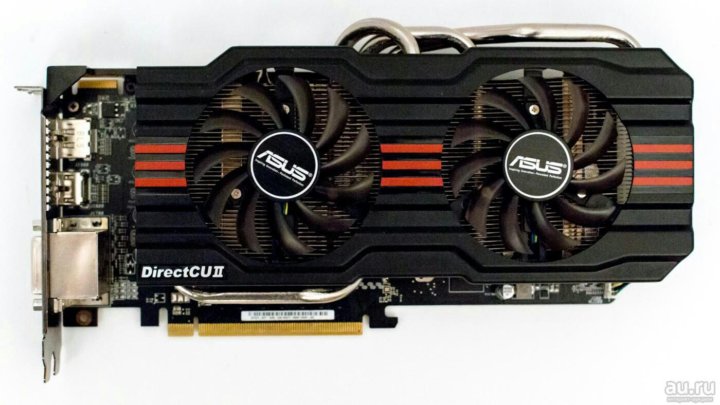 2GeForce GTX 260GeForce GTS 250GeForce GTS 240GeForce GT 240GeForce GT 230GeForce GT 220GeForce 210Geforce 205GeForce GTS 150GeForce GT 130GeForce GT 120GeForce G100GeForce 9800 GTX+GeForce 9800 GTXGeForce 9800 GTSGeForce 9800 GTGeForce 9800 GX2GeForce 9600 GTGeForce 9600 GSO (G94)GeForce 9600 GSOGeForce 9500 GTGeForce 9500 GSGeForce 9400 GTGeForce 9400GeForce 9300GeForce 8800 ULTRAGeForce 8800 GTXGeForce 8800 GTS Rev2GeForce 8800 GTSGeForce 8800 GTGeForce 8800 GS 768MBGeForce 8800 GS 384MBGeForce 8600 GTSGeForce 8600 GTGeForce 8600 GSGeForce 8500 GT DDR3GeForce 8500 GT DDR2GeForce 8400 GSGeForce 8300GeForce 8200GeForce 8100GeForce 7950 GX2GeForce 7950 GTGeForce 7900 GTXGeForce 7900 GTOGeForce 7900 GTGeForce 7900 GSGeForce 7800 GTX 512MBGeForce 7800 GTXGeForce 7800 GTGeForce 7800 GS AGPGeForce 7800 GSGeForce 7600 GT Rev.2GeForce 7600 GTGeForce 7600 GS 256MBGeForce 7600 GS 512MBGeForce 7300 GT Ver2GeForce 7300 GTGeForce 7300 GSGeForce 7300 LEGeForce 7300 SEGeForce 7200 GSGeForce 7100 GS TC 128 (512)GeForce 6800 Ultra 512MBGeForce 6800 UltraGeForce 6800 GT 256MBGeForce 6800 GT 128MBGeForce 6800 GTOGeForce 6800 256MB PCI-EGeForce 6800 128MB PCI-EGeForce 6800 LE PCI-EGeForce 6800 256MB AGPGeForce 6800 128MB AGPGeForce 6800 LE AGPGeForce 6800 GS AGPGeForce 6800 GS PCI-EGeForce 6800 XTGeForce 6600 GT PCI-EGeForce 6600 GT AGPGeForce 6600 DDR2GeForce 6600 PCI-EGeForce 6600 AGPGeForce 6600 LEGeForce 6200 NV43VGeForce 6200GeForce 6200 NV43AGeForce 6500GeForce 6200 TC 64(256)GeForce 6200 TC 32(128)GeForce 6200 TC 16(128)GeForce PCX5950GeForce PCX 5900GeForce PCX 5750GeForce PCX 5550GeForce PCX 5300GeForce PCX 4300GeForce FX 5950 UltraGeForce FX 5900 UltraGeForce FX 5900GeForce FX 5900 ZTGeForce FX 5900 XTGeForce FX 5800 UltraGeForce FX 5800GeForce FX 5700 Ultra /DDR-3GeForce FX 5700 Ultra /DDR-2GeForce FX 5700GeForce FX 5700 LEGeForce FX 5600 Ultra (rev.
2GeForce GTX 260GeForce GTS 250GeForce GTS 240GeForce GT 240GeForce GT 230GeForce GT 220GeForce 210Geforce 205GeForce GTS 150GeForce GT 130GeForce GT 120GeForce G100GeForce 9800 GTX+GeForce 9800 GTXGeForce 9800 GTSGeForce 9800 GTGeForce 9800 GX2GeForce 9600 GTGeForce 9600 GSO (G94)GeForce 9600 GSOGeForce 9500 GTGeForce 9500 GSGeForce 9400 GTGeForce 9400GeForce 9300GeForce 8800 ULTRAGeForce 8800 GTXGeForce 8800 GTS Rev2GeForce 8800 GTSGeForce 8800 GTGeForce 8800 GS 768MBGeForce 8800 GS 384MBGeForce 8600 GTSGeForce 8600 GTGeForce 8600 GSGeForce 8500 GT DDR3GeForce 8500 GT DDR2GeForce 8400 GSGeForce 8300GeForce 8200GeForce 8100GeForce 7950 GX2GeForce 7950 GTGeForce 7900 GTXGeForce 7900 GTOGeForce 7900 GTGeForce 7900 GSGeForce 7800 GTX 512MBGeForce 7800 GTXGeForce 7800 GTGeForce 7800 GS AGPGeForce 7800 GSGeForce 7600 GT Rev.2GeForce 7600 GTGeForce 7600 GS 256MBGeForce 7600 GS 512MBGeForce 7300 GT Ver2GeForce 7300 GTGeForce 7300 GSGeForce 7300 LEGeForce 7300 SEGeForce 7200 GSGeForce 7100 GS TC 128 (512)GeForce 6800 Ultra 512MBGeForce 6800 UltraGeForce 6800 GT 256MBGeForce 6800 GT 128MBGeForce 6800 GTOGeForce 6800 256MB PCI-EGeForce 6800 128MB PCI-EGeForce 6800 LE PCI-EGeForce 6800 256MB AGPGeForce 6800 128MB AGPGeForce 6800 LE AGPGeForce 6800 GS AGPGeForce 6800 GS PCI-EGeForce 6800 XTGeForce 6600 GT PCI-EGeForce 6600 GT AGPGeForce 6600 DDR2GeForce 6600 PCI-EGeForce 6600 AGPGeForce 6600 LEGeForce 6200 NV43VGeForce 6200GeForce 6200 NV43AGeForce 6500GeForce 6200 TC 64(256)GeForce 6200 TC 32(128)GeForce 6200 TC 16(128)GeForce PCX5950GeForce PCX 5900GeForce PCX 5750GeForce PCX 5550GeForce PCX 5300GeForce PCX 4300GeForce FX 5950 UltraGeForce FX 5900 UltraGeForce FX 5900GeForce FX 5900 ZTGeForce FX 5900 XTGeForce FX 5800 UltraGeForce FX 5800GeForce FX 5700 Ultra /DDR-3GeForce FX 5700 Ultra /DDR-2GeForce FX 5700GeForce FX 5700 LEGeForce FX 5600 Ultra (rev. 2)GeForce FX 5600 Ultra (rev.1)GeForce FX 5600 XTGeForce FX 5600GeForce FX 5500GeForce FX 5200 UltraGeForce FX 5200GeForce FX 5200 SEGeForce 4 Ti 4800GeForce 4 Ti 4800-SEGeForce 4 Ti 4200-8xGeForce 4 Ti 4600GeForce 4 Ti 4400GeForce 4 Ti 4200GeForce 4 MX 4000GeForce 4 MX 440-8x / 480GeForce 4 MX 460GeForce 4 MX 440GeForce 4 MX 440-SEGeForce 4 MX 420GeForce 3 Ti500GeForce 3 Ti200GeForce 3GeForce 2 Ti VXGeForce 2 TitaniumGeForce 2 UltraGeForce 2 PROGeForce 2 GTSGeForce 2 MX 400GeForce 2 MX 200GeForce 2 MXGeForce 256 DDRGeForce 256Riva TNT 2 UltraRiva TNT 2 PRORiva TNT 2Riva TNT 2 M64Riva TNT 2 Vanta LTRiva TNT 2 VantaRiva TNTRiva 128 ZXRiva 128
2)GeForce FX 5600 Ultra (rev.1)GeForce FX 5600 XTGeForce FX 5600GeForce FX 5500GeForce FX 5200 UltraGeForce FX 5200GeForce FX 5200 SEGeForce 4 Ti 4800GeForce 4 Ti 4800-SEGeForce 4 Ti 4200-8xGeForce 4 Ti 4600GeForce 4 Ti 4400GeForce 4 Ti 4200GeForce 4 MX 4000GeForce 4 MX 440-8x / 480GeForce 4 MX 460GeForce 4 MX 440GeForce 4 MX 440-SEGeForce 4 MX 420GeForce 3 Ti500GeForce 3 Ti200GeForce 3GeForce 2 Ti VXGeForce 2 TitaniumGeForce 2 UltraGeForce 2 PROGeForce 2 GTSGeForce 2 MX 400GeForce 2 MX 200GeForce 2 MXGeForce 256 DDRGeForce 256Riva TNT 2 UltraRiva TNT 2 PRORiva TNT 2Riva TNT 2 M64Riva TNT 2 Vanta LTRiva TNT 2 VantaRiva TNTRiva 128 ZXRiva 128
You can simultaneously select
up to 10 video cards by holding Ctrl
Reviews of video cards NVIDIA GeForce GTX 750 Ti:
-
Review and testing of the video card EVGA GeForce GTX 750 Ti FTW ACX Cooling
EVGA GeForce GTX 750 Ti FTW ACX Cooling
-
Review and testing of the video card Palit GeForce GTX 750 Ti KalmX with passive cooling
Palit GTX 750 Ti KalmX
-
Review and testing of the video card ASUS STRIX-GTX750TI-OC-2GD5
ASUS STRIX-GTX750TI-OC-2GD5
-
Review and testing of the video card Gigabyte GV-N75TWF2OC-2GI based on the GeForce GTX 750 Ti
Gigabyte GV-N75TWF2OC-2GI
-
Even faster! Review and testing Palit GeForce GTX 750 Ti StormX Dual
Palit GeForce GTX 750 Ti StormX Dual
-
Another GeForce GTX 750 Ti.
 Review and testing of ASUS GTX750TI-OC-2GD5
Review and testing of ASUS GTX750TI-OC-2GD5
ASUS GTX750TI-OC-2GD5
-
Beginning of the Maxwell era. Review and testing GeForce GTX 750 Ti by MSI
MSI N750Ti TF 2GD5/OC
Comparison NVIDIA GeForce GTX 750 Ti vs AMD Radeon R9 270X which is better?
| General | |
|
Value for money The sum of all the advantages of the device divided by its price. The more%, the better the quality per unit price in comparison with all analogues. |
|
| 54%
12.2% (29.2%) better than |
41.8% |
|
Architecture |
|
| Maxwell | GCN 1.0 |
|
Codename |
|
| GM107 | Curacao |
|
Type |
|
| Desktop | Desktop |
|
Release price |
|
| $149
-50 $ (-25. |
199 $ |
|
Number of shaders |
|
| 640 | 1280
640 (100%) better than |
|
Core clock |
|
| 1020MHz | no data |
|
Boost frequency |
|
| 1085 MHz
35 MHz (3.3%) better than |
1050 MHz |
|
Number of transistors |
|
| 1.870 million | 2.800 million |
|
Process |
|
| 28 nm | 28 nm |
|
Interface |
|
| PCIe 3.0 x16 | PCIe 3.0 x16 |
|
Power consumption (TDP) Calculated heat output shows the average heat dissipation in load operation, |
|
| 60W
-120 W (-66.7%) better than |
180 W |
|
Length |
|
| 14.5 cm | n/a |
|
Additional power connectors |
|
| no | 2 x 6-pin |
|
G-SYNC Ready NVIDIA G-SYNC technology delivers a smooth gaming experience with variable refresh rates and the elimination of visual artifacts. |
|
|
3D Vision |
|
| + | no data |
|
GPU Boost |
|
| + | no data |
|
GeForce Experience |
|
| + | no data |
|
Vulkan NVIDIA’s Vulkan technology allows developers to gain low-level access to the GPU to optimize graphics commands (better than OpenGL and Direct3D APIs). |
|
| n/a | + |
|
CUDA The CUDA architecture enables applications that are optimized for |
|
|
Multi-monitor support |
|
| 4 | no data |
|
Decred / DCR (Decred) |
|
| 0.51 Gh/s | no data |
|
Zcash / ZEC (Equihash) |
|
| 1 Sol/s | 1 Sol/s |
|
Bus |
|
| PCI Express 3.0 | PCIe 3.0 |
|
Number of CUDA cores A large number of CUDA cores improve performance in graphics computing, |
|
| 640 | no data |
|
Height |
|
| 11.1 cm | no data |
|
HDCP |
|
| + | no data |
|
Maximum resolution via VGA |
|
| 2048×1536 | no data |
|
Audio input for HDMI |
|
| internal | no data |
|
Design |
|
| n/a | reference |
|
Eyefinity |
|
| n/a | + |
|
HDMI |
|
|
DisplayPort ready |
|
|
AppAcceleration |
|
| n/a | + |
|
FreeSync |
|
| n/a | + |
|
HD3D |
|
| n/a | + |
|
LiquidVR |
|
| n/a | + |
|
TressFX |
|
| n/a | + |
|
TrueAudio |
|
| n/a | + |
|
Audio DDMA |
|
| n/a | + |
|
UVD |
|
| n/a | + |
|
Blu Ray 3D |
|
| + | no data |
|
3D Gaming |
|
| + | no data |
|
3D Vision Live |
|
| + | no data |
|
FXAA |
|
|
TXAA |
|
|
Adaptive VSync |
|
| + | no data |
|
Video connectors |
|
| 1x Dual Link DVI-I, 1x Dual Link DVI-D, 1x mini-HDMI | 2x DVI, 1x HDMI, 1x DisplayPort |
|
DirectX |
|
| 12 (11_0) | DirectX® 12 |
|
Floating point performance |
|
| 1. |
2.688 gflops |
|
Ethereum / ETH (DaggerHashimoto) |
|
| 2.3 Mh/s | 30 Mh/s |
|
CrossFire |
|
| n/a | + |
| Memory | |
|
Memory type |
|
| GDDR5 | GDDR5 |
|
Maximum memory Large video memory allows you to run demanding games with lots of textures, |
|
| 2GB | 2 GB |
|
Memory bus width The wider the video memory bus, the more data is transferred to the GPU per unit of time and the better performance in demanding games. |
|
| 128 bit | 256 bit
128 bit (100%) better than |
|
Shared memory |
|
| — | — |
|
Memory frequency A high memory frequency has a positive effect on the speed of a video card with a large amount of data. |
|
| 5.4MHz | no data |
|
Memory bandwidth The higher the data transfer bandwidth, the more effective amount of RAM the PC can use. |
|
| 86.4 | 179.2
92.8 (107.4%) better than |
PowerColor R9 270X PCS+ review. Overclocked product at the price of the reference (AXR9 270X 2GBD5-PPDHE)
Traditionally, the most popular video cards are solutions in the price range up to $200. Perhaps this is a fairly reasonable choice, since video cards worth $500 will still lose at least 30% in price in 12 months, and solutions worth $1000 will have to be exploited until the moment when conscience allows it to be sold on the secondary market for 300. One of the novelties of the second half of 2013 in the price range under $200 are AMD Radeon R9 graphics cards.270X, which we propose to consider in the PowerColor variant.
TUL is a traditional partner of AMD. Under the PowerColor brand, the manufacturer has a whole arsenal of solutions based on the AMD Radeon R9 270X. In our review, the PowerColor R9 270X PCS + video card will be presented, which differs from the reference version in a modified cooling system and factory overclocking. Abroad, the product is supplied complete with an external autonomous power supply for mobile devices, which we have not seen in our country. The recommended cost of the product is at the level of the cost of the reference product — $200.
PowerColor also has PowerColor PCS+ R9 270X 2GB GDDR5 and PowerColor PCS+ R9 270X 2GB GDDR5 OC video cards in this series. I would like to note and warn that the reference version of PowerColor PCS + R9 270X 2GB GDDR5 works at a slightly lower operating frequency of the core — instead of the standard 1050 MHz, we have 1030 MHz here. But the video memory operates at a frequency of 1400 MHz. Naturally, you can fix this with your own hands, but why — if you buy a reference video card and its operating frequencies should be reference.
The second PowerColor PCS+ R9 270X 2GB GDDR5 OC is factory overclocked and has a modified cooling system. Factory overclocking is not great — 1060 MHz for the core, that is, just a ridiculous 10 MHz. This product also has a factory overclocked video memory up to 1425MHz.
Once again, let’s dwell on the price positioning of AMD Radeon R9 270X video cards. Here, AMD followed in the footsteps of NVIDIA and simply renamed the previous generation of AMD Radeon HD 7870 video cards. The core remained the same Pitcairn, only the operating frequencies of the core and video memory increased. Naturally, while maintaining the previous architecture, nothing has changed, although the manufacturer described the AMD Radeon R9 during the presentation.270X as a revolutionary product for its time.
In fact, the revolutionary nature of this video card lies in only one thing — its cost is in the price range up to $200 and it has no direct competitor at this price. The NVIDIA GeForce GTX 760 solution is more expensive, while the GeForce GTX 660 solution is almost decommissioned, cheaper, but also slower.
But along with the advent of AMD Radeon R9 270X, the price positioning of the Radeon HD 7870 has changed — it has become cheaper than the GeForce GTX 660. The product from AMD has a recommended price of $175, and from NVIDIA $180. At the same time, the AMD solution turns out to be more productive. If at the time of the announcement, buying a GeForce GTX 660 was an excellent choice, then today the Radeon HD 7870 is a much more profitable purchase than NVIDIA’s solution.
Thus, a picture is being built for New Year’s shopping:
1) AMD Radeon HD 7870 or Radeon R9 270X, which is a renamed version of the former with faster video memory, should be taken in the $160-180 price range.
2) in the price range of 180-200 dollars, it makes sense to take a closer look at the variations of the Radeon R9 270X.
Next, we propose to consider a participant in our review.
Package contents
PowerColor R9 graphics card270X PCS+ comes in a black box. The first photo shows a box with an external autonomous power supply for mobile devices as a gift, and the second one without it. As you can see, with an external autonomous power source — a limited series and, apparently, it will not reach our country.
This is what this external self-contained power supply looks like. Blue LEDs inform about the level of residual charge — a handy thing when hiking.
Standard gift-free set includes video card, manual, DVI-to-VGA adapter, i.e. unremarkable standard set.
Visual inspection of the video card
The video card has a modified good cooling system. The principle of its operation is standard — heat from the base is transferred through heat pipes to a massive radiator, which is blown by large fans. Due to the large dimensions of the fans, even at their low speed, the required level of air exchange is ensured with a minimum noise level.
The reverse side of the PCB is completely covered with an aluminum plate. On the one hand, it serves as a heat sink, on the other hand, it does not allow the user to make any modification in the power circuit without breaking the warranty seal.
There is a connector for the so-called «Turbo timer». This is an analogue of the timer, which is installed on Chinese turbocharged engines and some of the first versions of the German car industry’s turbo engines. If in cars, after turning off the ignition switch, the engine runs until the turbine cools down, then with the PowerColor Turbo Timer, the video card will turn the fans after the computer is turned off until the graphics core cools down.
Recently, this has become relevant, since when a load is applied, the power consumption of the video card increases significantly and, accordingly, heat dissipation. A quick shutdown of the computer after a long game can lead to increased wear of the power circuit of the board, in particular, solid capacitors, which, although they themselves do not heat up a lot, do not like high operating temperatures.
The connector for the CrossFire bridge is retained on the side of the PCB. New video cards based on Hawaii graphics cores no longer have this connector, since they do not need CrossFire bridges to create multigraphic configurations.
The video card has a standard set of ports for image output: HDMI, DisplayPort and two DVI ports.
Elpida chips with a nominal operating frequency of 1500 MHz are soldered as video memory chips.
The voltage controller is Rectifier IR3567B, which supports software monitoring and control of set values.
AMD R9 270X graphics card specifications
1. Core operating frequency: 1050 MHz
2. Universal processors: 1280
3. Memory type: GDDR5
4. Memory capacity: 2 GB
5. Video memory operating frequency: 1400 MHz
6. Bus 256 bit
7. PCI Express 3.0 bus
8. Heat dissipation: up to 150 W
9. Recommended price: $190
The PowerColor R9 270X PCS+ graphics card is factory overclocked to 1100 MHz core and 1425 MHz video memory.
Test configuration
The PowerColor R9 270X PCS+ graphics card was tested with the following configuration:
1. Intel Core i7 920 processor.
2. ASUS P6T motherboard.
3.2×3 Gb Samsung Original DDR3-1600
4.WD 1TB WD1001FALS Caviar Black SATAII
5. Hiper M1000 power supply.
6. Thermaltake Mambo case.
7. ASRock USB 3.0 PCI-Exp x1 dual port board.
Despite the «not freshness» of iron, it is quite enough to unlock the potential of this solution
1. The operating temperature of the video card
PowerColor R9 270X PCS+ — 32/74 C — idle / load in degrees
ASUS R9 270 Direct CU II OC — 34/65 — idle / load in degrees
AMD R9 270 — 36/70 C — idle / load in degrees
AMD Radeon R9 290X — 49/95 C — idle / load in degrees
AMD Radeon R9 290 — 46/93 C — idle / load in degrees
GeForce GTX 780 Ti — 33/82 C — idle / load in degrees
Video card was tested under the following conditions:
— 27 degrees in the room,
— the video card is installed in a closed case,
— there are no additional cooling fans in the case,
— the load is applied until the temperatures are fully stabilized for 15 minutes.
The graphics card’s cooling system emits a noise level of 40 dBA, which is much higher than that of the GeForce GTX 660 or GTX 760 series graphics cards. The reason is simple — higher power consumption leads to more heat dissipation. Therefore, under load, the PowerColor R9 solution270X PCS+ can’t be called quiet.
2. Overclocking graphics card
The PowerColor R9 270X PCS+ video card overclocked to 1178 MHz in the core, and up to 1574 MHz in the video memory. The result is not high — the average.
3. Battlefield 3 game
Test conditions: FullHD resolution, 4xAA anti-aliasing.
PowerColor R9 270X PCS+ — 67 FPS
ASUS R9 270 Direct CU II OC — 62 FPS
AMD R9 270 — 60 FPS
AMD Radeon HD 7870 — 58 FPS
NVIDIA GeForce GTX 660 — 57 FPS
NVIDIA GeForce GTX 650 Ti Boost — 50 FPS
We launched video cards in the new version of Battlefield 4 — the average FPS in the same mode is around 40-43, which is quite enough for a comfortable game.
4. Crysis 3
Test conditions: resolution 1980×1200 pixels, anti-aliasing 4xAA.
PowerColor R9 270X PCS+ — 25 FPS
ASUS R9 270 Direct CU II OC — 23 FPS
AMD R9 270 — 21 FPS
AMD Radeon HD 7870 — 22 FPS
NVIDIA GeForce GTX 660 — 22 FPS
NVIDIA GeForce GTX 650 Ti Boost — 20 FPS
5. Metro: Last Light
Test conditions: resolution 1980×1200 pixels, anti-aliasing 4xAA.
PowerColor R9 270X PCS+ — 43 FPS
ASUS R9 270 Direct CU II OC — 41 FPS
AMD R9 270 — 39 FPS
AMD Radeon HD 7870 — 37 FPS
NVIDIA GeForce GTX 660 — 35 FPS
NVIDIA GeForce GTX 650 Ti Boost — 31 FPS
Conclusion
From the test results, we can see that the PowerColor R9 270X PCS+ graphics card will be a great purchase for its $200 price range. But we should not forget that the AMD Radeon R9 270X solutions differ from the Radeon R9 270 only in a higher core operating frequency, and if you have the knowledge, you can achieve a higher level of performance by purchasing a Radeon R9 270 video card. The saved 10-15 dollars will not be superfluous for a non-wasteful gamer.
Comparison of Radeon R9 270X and GeForce GTX 750 Ti. What’s better?
|
Radeon R9 270X |
GeForce GTX 750 Ti |
|
October, 2013 | 1GHz | 2GB GDDR5 |
February, 2014 | 1GHz | 2GB GDDR5 |
|
Edelmark rating |
Edelmark rating |
General comparison
Game performance
Video card tested on: Battlefield 3, Battlefield 4, Bioshock Infinite, Crysis 2, Crysis 3, Dirt3, FarCry 3, Hitman: Absolution, Metro: Last Light, Thief, Alien: Isolation , Anno 2070, Counter-Strike: Global Offensive, Diablo III, Dirt Rally, Dragon Age: Inquisition, The Elder Scrolls V: Skyrim, FIFA 15, FIFA 16, GRID Autosport, Grand Theft Auto V, Sleeping Dogs, Tomb Raider, The Witcher 3: Wild Hunt.
| Radeon R9 270X | 6.0 out of 10 |
|---|---|
| GeForce GTX 750 Ti | 5.9 out of 10 |
| GeForce GTX 960 | 6.7 out of 10 |
Graphics
Video card tests were performed on: T-Rex, Manhattan, Cloud Gate Factor, Sky Diver Factor, Fire Strike Factor.
| Radeon R9 270X | 6.2 out of 10 |
|---|---|
| GeForce GTX 750 Ti | 7. |
| GeForce GTX 960 | 8.0 out of 10 |
Computing power
Tested on: Face Detection, Ocean Surface Simulation, Particle Simulation, Video Composition, Bitcoin Mining.
| Radeon R9 270X | 6.9 out of 10 |
|---|---|
| GeForce GTX 750 Ti | 6.2 out of 10 |
| GeForce GTX 960 | 6.4 out of 10 |
Output per W
Video card tests performed on: Battlefield 3, Battlefield 4, Bioshock Infinite, Crysis 2, Crysis 3, Dirt3, FarCry 3, Hitman: Absolution, Metro: Last Light, Thief, Alien: Isolation, Anno 2070, Counter-Strike: Global Offensive, Diablo III, Dirt Rally, Dragon Age: Inquisition, The Elder Scrolls V: Skyrim, FIFA 15, FIFA 16, GRID Autosport, Grand Theft Auto V, Sleeping Dogs, Tomb Raider, The Witcher 3: Wild Hunt, T-Rex , Manhattan, Cloud Gate Factor, Sky Diver Factor, Fire Strike Factor, Face Detection, Ocean Surface Simulation, Particle Simulation, Video Composition, Bitcoin Mining, TDP.
| Radeon R9 270X | 7.1 out of 10 |
|---|---|
| GeForce GTX 750 Ti | 8.3 out of 10 |
| GeForce GTX 960 | 8.4 out of 10 |
Price-Performance
Tested with: Battlefield 3, Battlefield 4, Bioshock Infinite, Crysis 2, Crysis 3, Dirt3, FarCry 3, Hitman: Absolution, Metro: Last Light, Thief, Alien: Isolation, Anno 2070 , Counter-Strike: Global Offensive, Diablo III, Dirt Rally, Dragon Age: Inquisition, The Elder Scrolls V: Skyrim, FIFA 15, FIFA 16, GRID Autosport, Grand Theft Auto V, Sleeping Dogs, Tomb Raider, The Witcher 3: Wild Hunt, T-Rex, Manhattan, Cloud Gate Factor, Sky Diver Factor, Fire Strike Factor, Face Detection, Ocean Surface Simulation, Particle Simulation, Video Composition, Bitcoin Mining, Best new price.
| Radeon R9 270X | no data |
|---|---|
| GeForce GTX 750 Ti | no data |
| GeForce GTX 960 | no data |
Noise and power
Video card tested on: TDP, Idle Power Consumption, Load Power Consumption, Idle Noise Level, Load Noise Level.
| Radeon R9 270X | 8.6 out of 10 |
|---|---|
| GeForce GTX 750 Ti | 9.6 out of 10 |
| GeForce GTX 960 | 9.1 out of 10 |
Overall graphics card rating
| Radeon R9 270X | 6.7 out of 10 |
|---|---|
| GeForce GTX 750 Ti | 7.0 out of 10 |
| GeForce GTX 960 | 7.5 out of 10 |
Benefits
Why is the Radeon R9 270X better?
| Significantly higher memory bandwidth | 179.2 GB/s | vs | 86.4 GB/s | More than 2x memory bandwidth |
|---|---|---|---|---|
| Better floating point performance | 2.688 GFLOPS | vs | 1,305.6 GFLOPS | More than 2x better floating point performance |
| Faster texture processing | 84 GTexel/s | vs | 40.8 GTexel/s | More than 2x faster texture rendering speed |
| Faster pixel fill rate | 33. |
vs | 16.32 GPixel/s | More than 2x faster pixel fill rate |
| More raster operation blocks | 32 | vs | 16 | Twice as many raster operation blocks |
| Better test Fire Strike | 51.83 | vs | 33.8 | Approximately 55% better than Fire Strike 9 test0568 |
| More shader blocks | 1.280 | vs | 640 | Twice as many shader units |
| More texture units | 80 | vs | 40 | Twice as many texture units |
| Significantly higher frame rate in battlefield 3 | 65 | vs | 50 | 30% higher frame rate in battlefield 3 |
| Wider memory bus | 256bit | vs | 128bit | 2x wider memory bus |
| Slightly better face recognition quality score | 57. |
vs | 44.94 mPixels/s | More than 25% better face recognition quality score |
Why is the GeForce GTX 750 Ti better?
| Significantly lower power consumption | 60W | vs | 180W | 3x lower power consumption |
|---|
Comparative benchmarks (benchmarks)
Bitcoin mining
| Radeon R9 270X | 293.29 mHash/s |
|---|---|
| GeForce GTX 750 Ti | 173.22 mHash/s |
Face Recognition
| Radeon R9 270X | 57.24 mPixels/s |
|---|---|
| GeForce GTX 750 Ti | 44.94 mPixels/s |
Fire Strike test
| Radeon R9 270X | 51.83 |
|---|---|
| GeForce GTX 750 Ti | 33.8 |
Sky Diver Test
| Radeon R9 270X | 338.41 |
|---|---|
| GeForce GTX 750 Ti | 255. |

 1%) better than
1%) better than 
